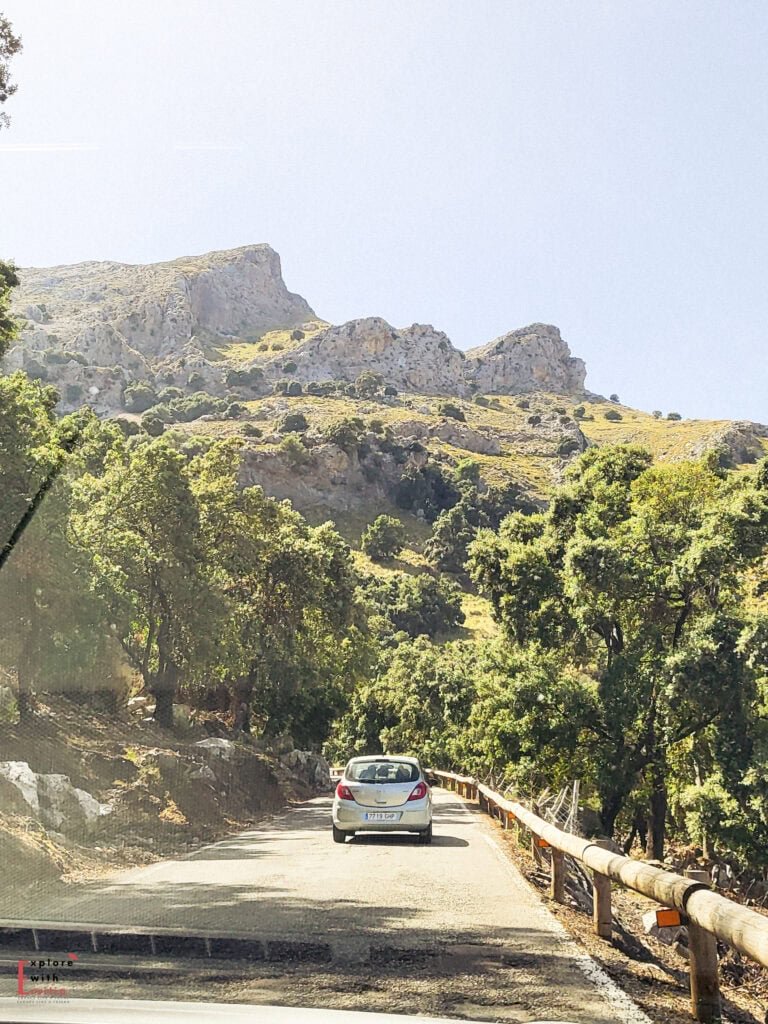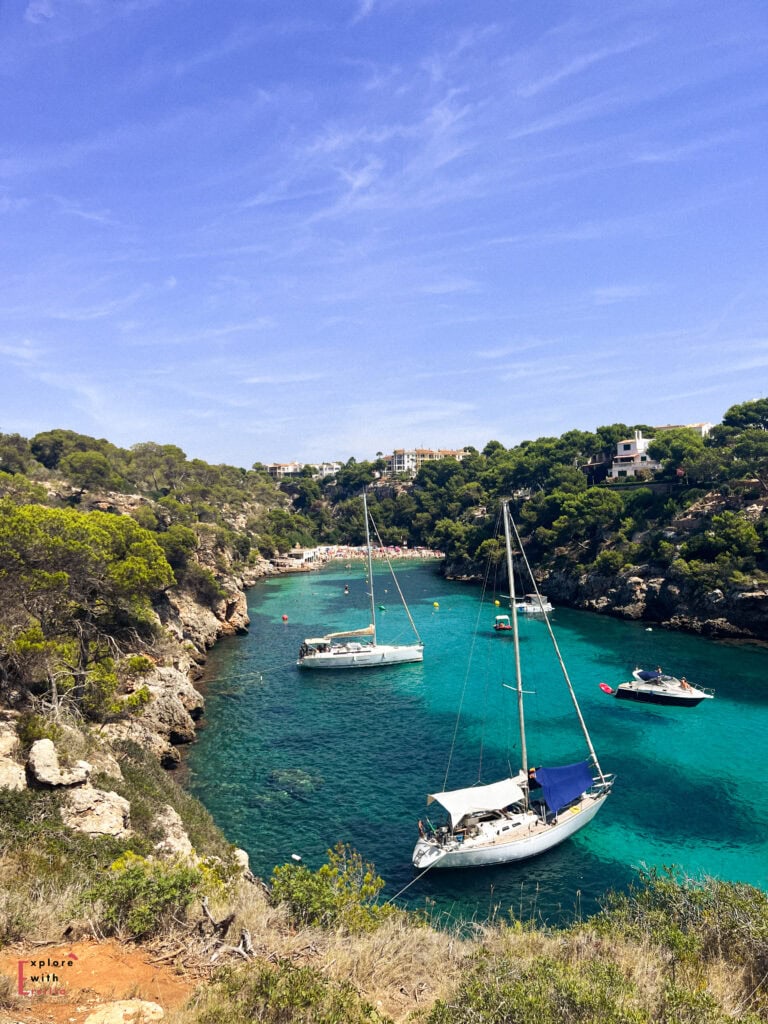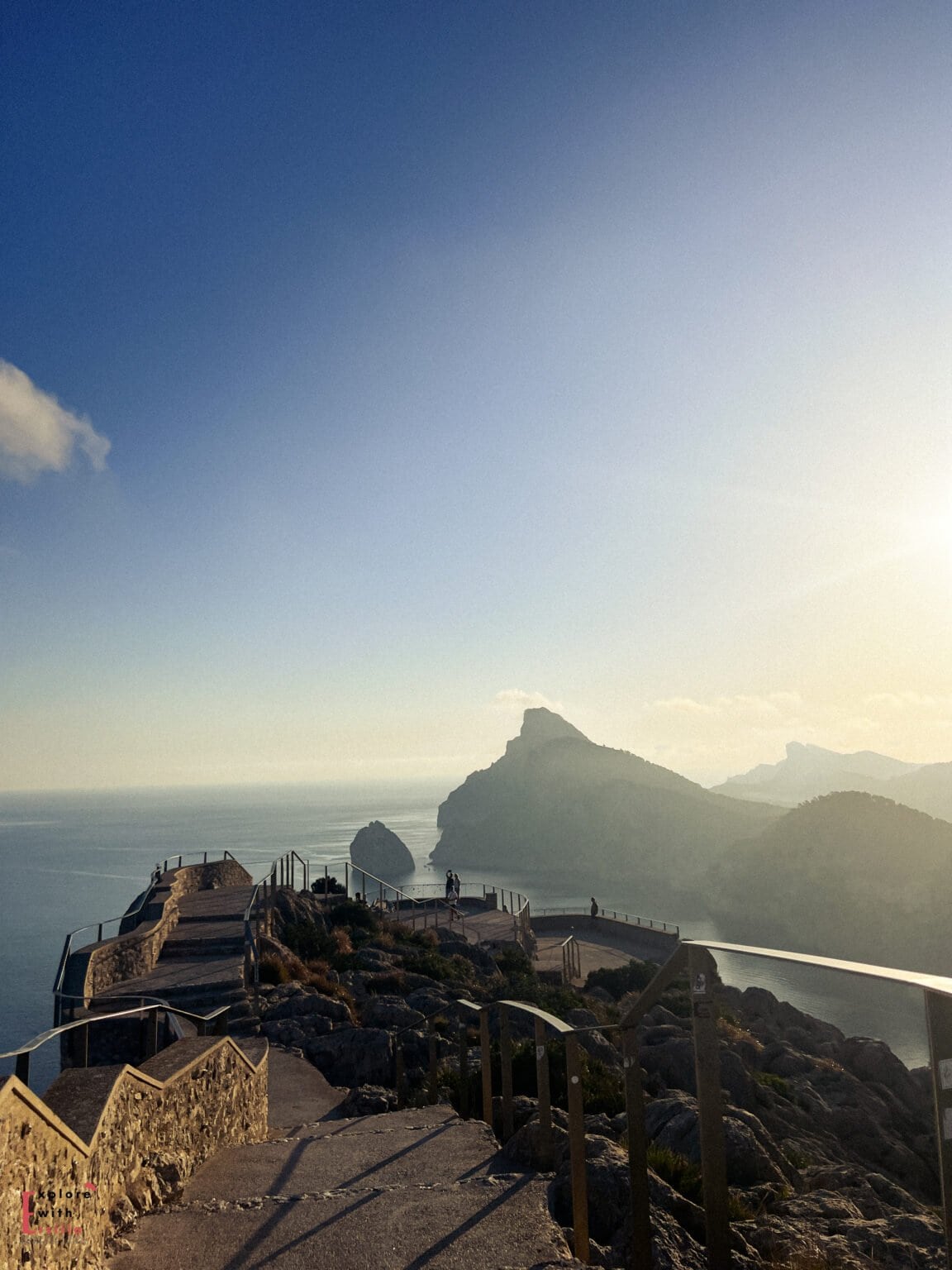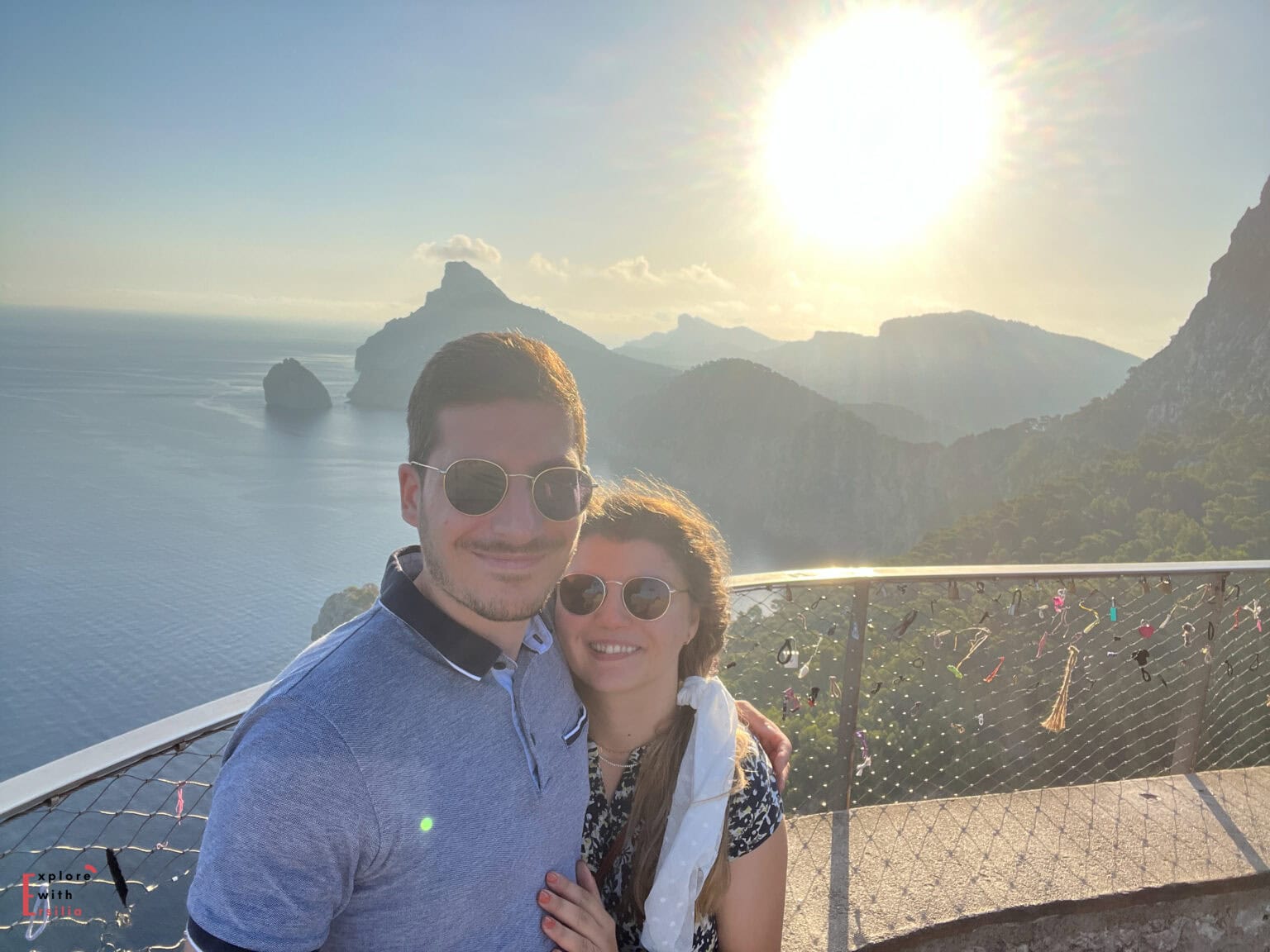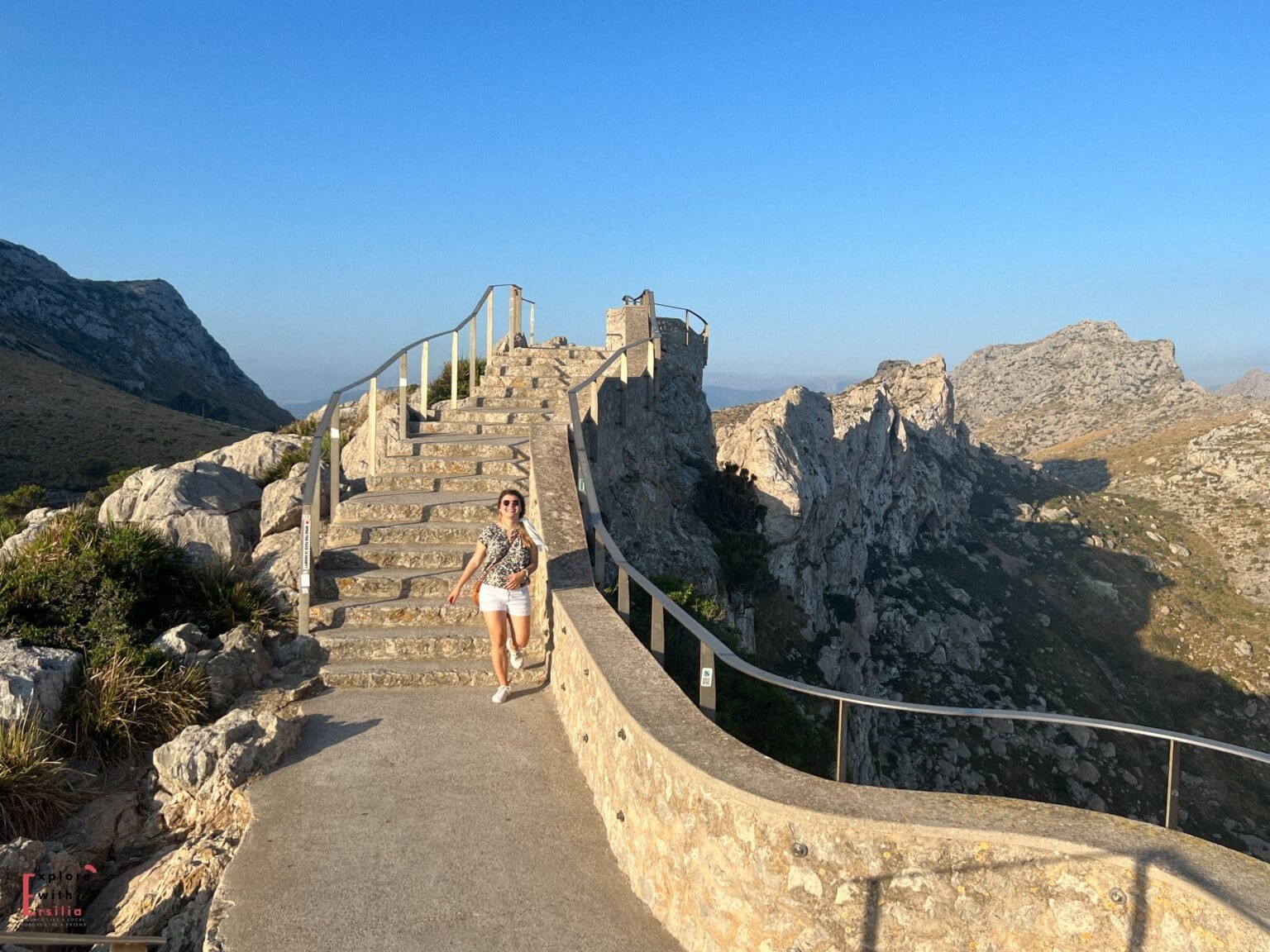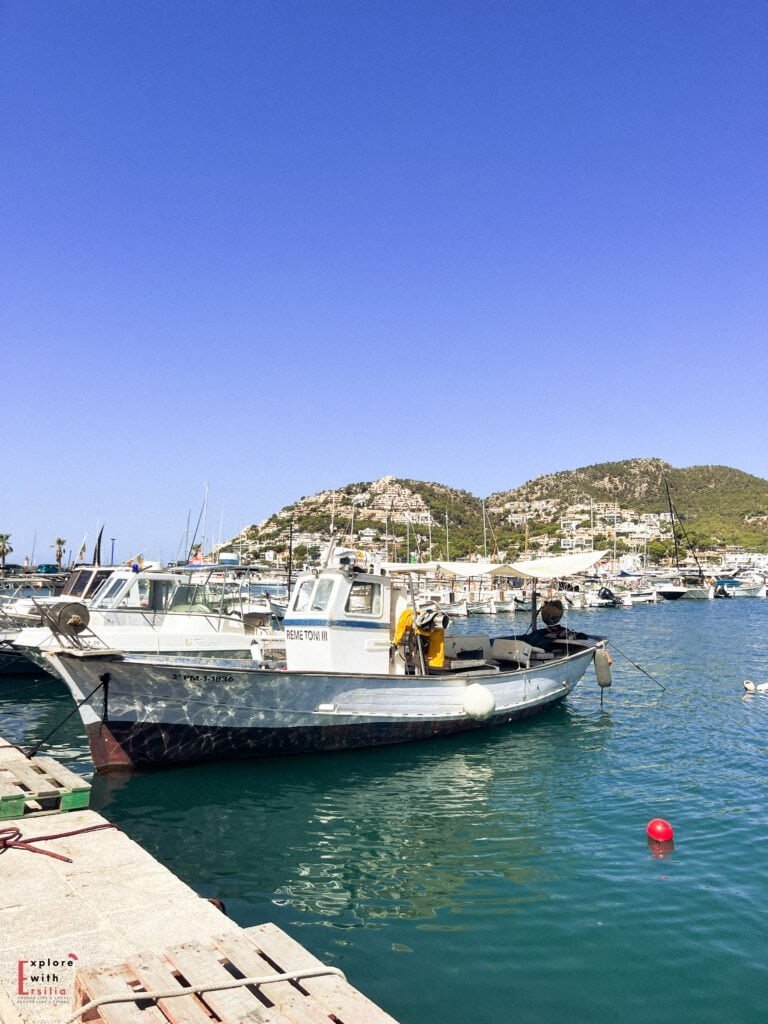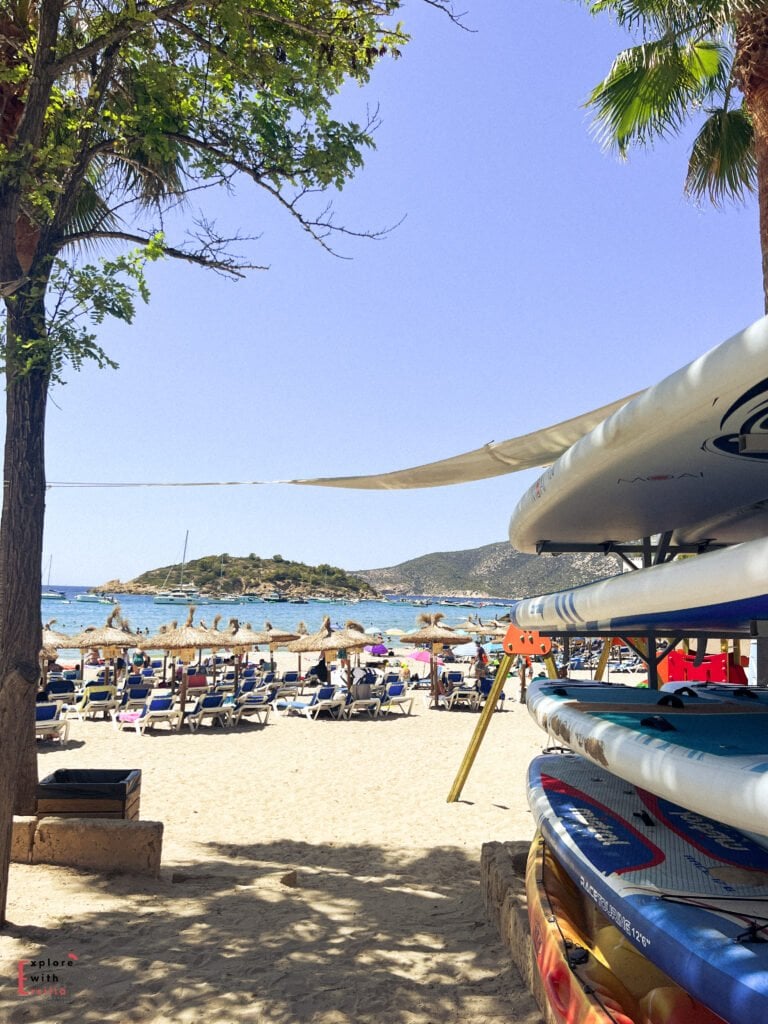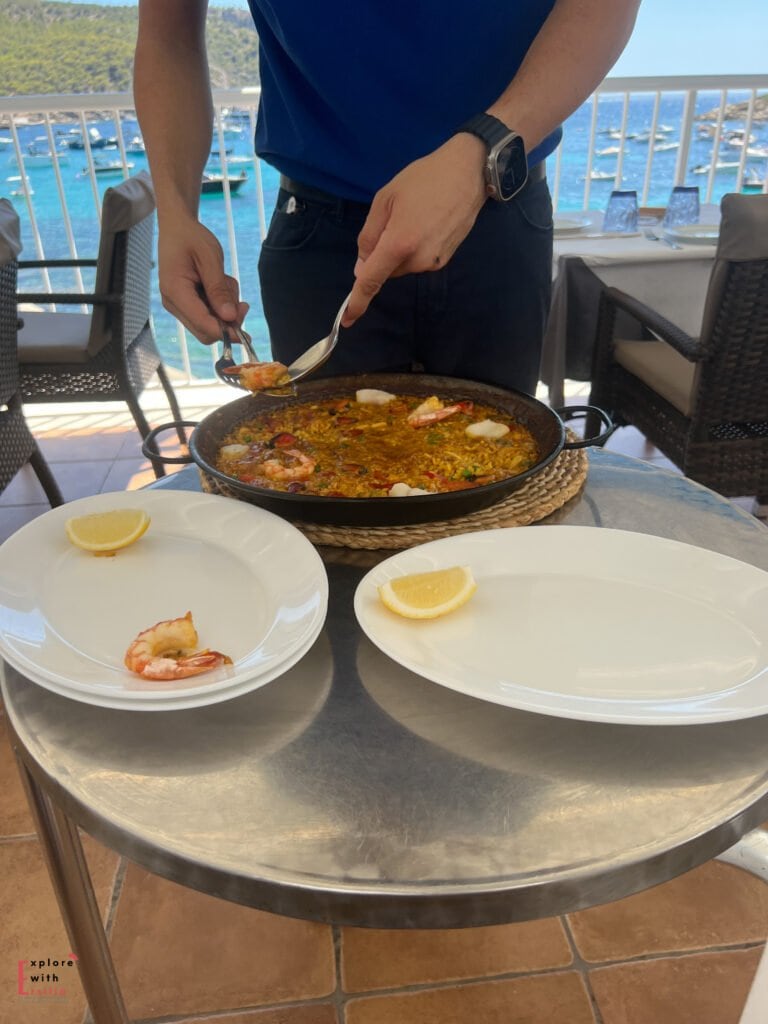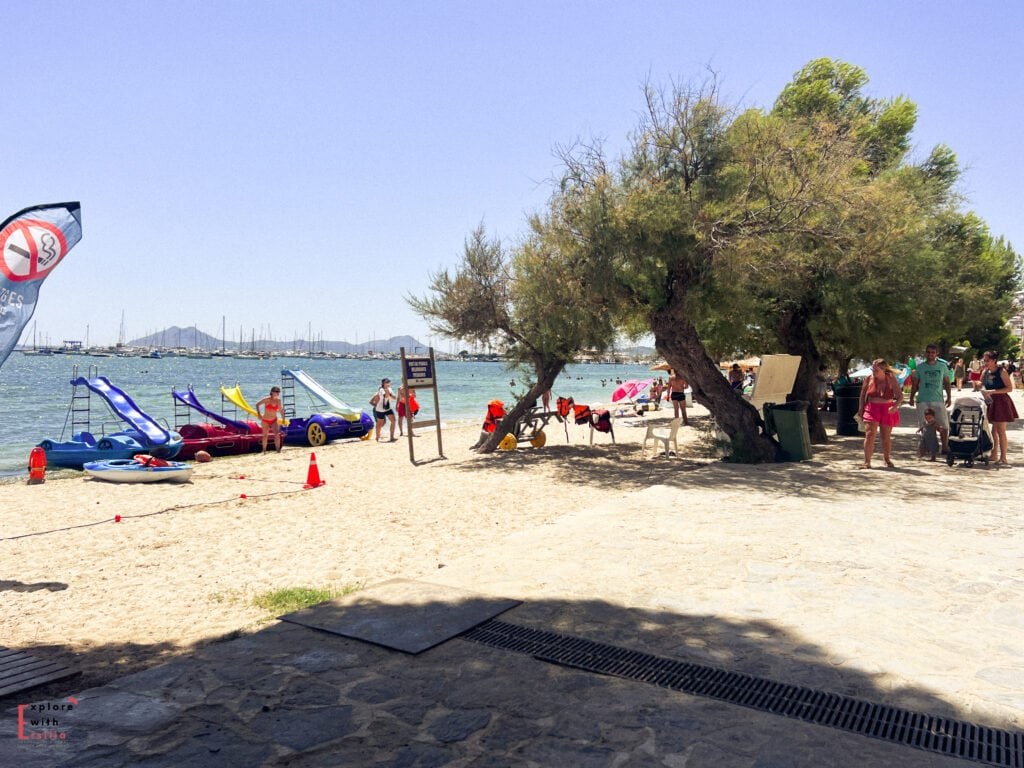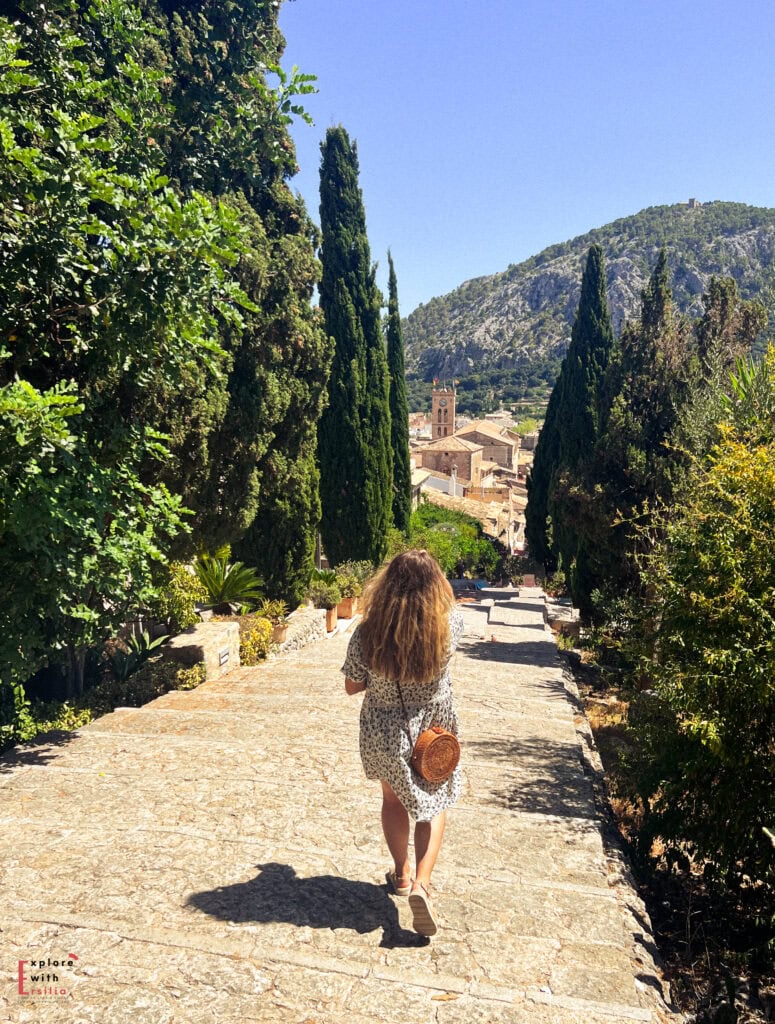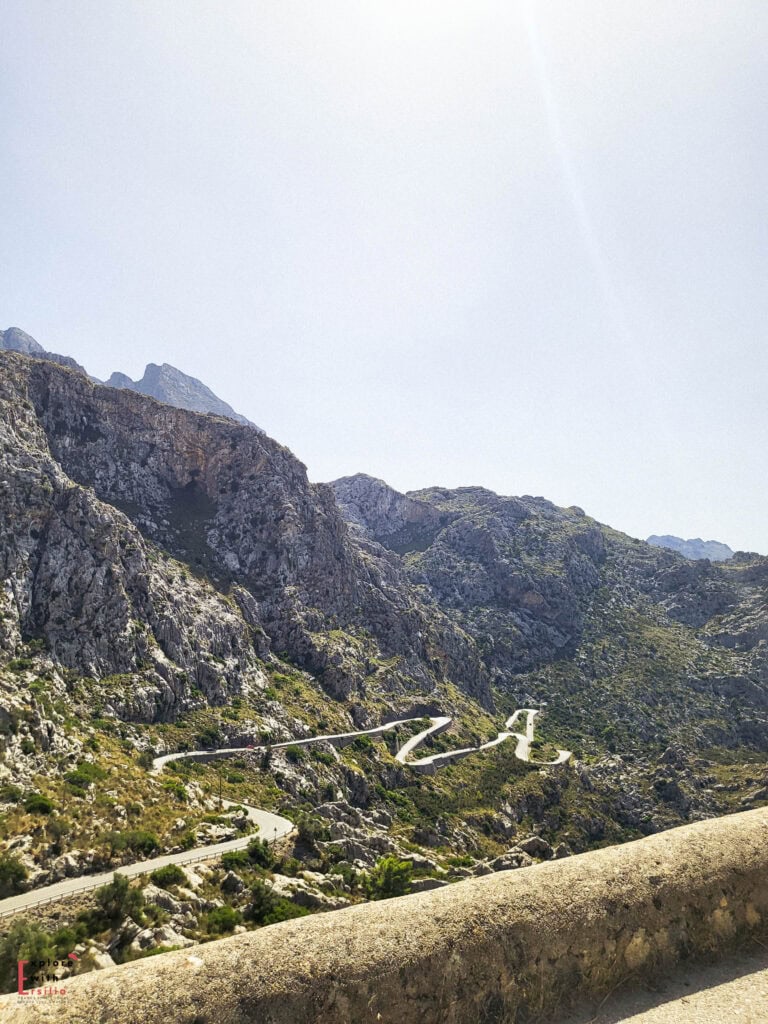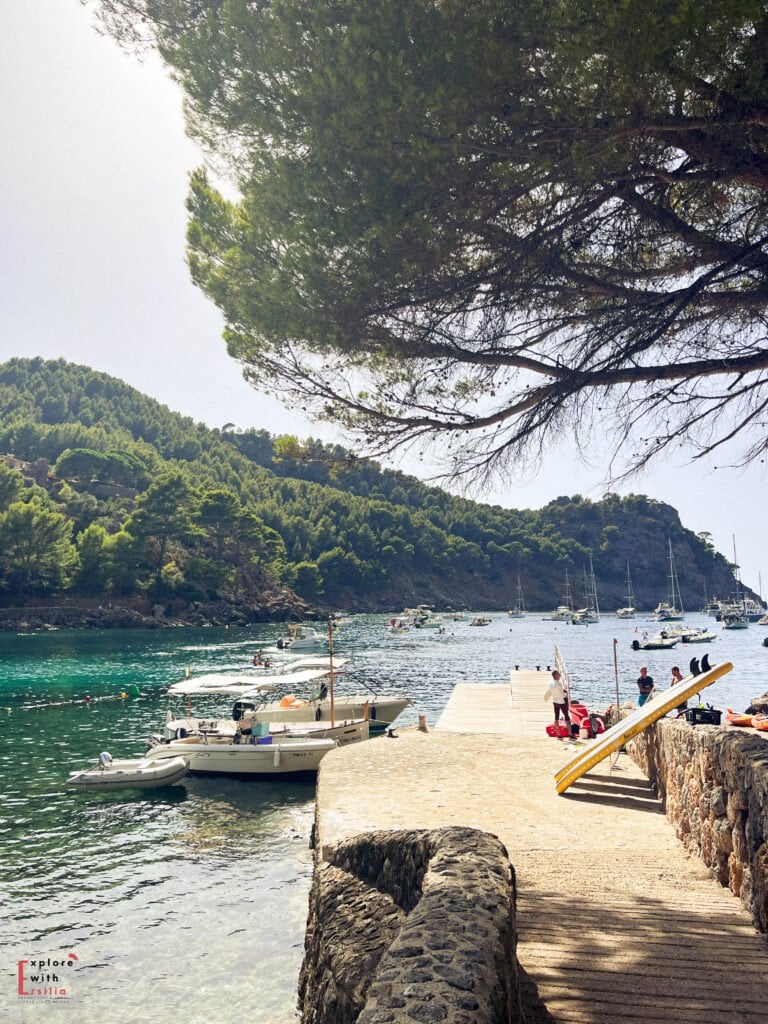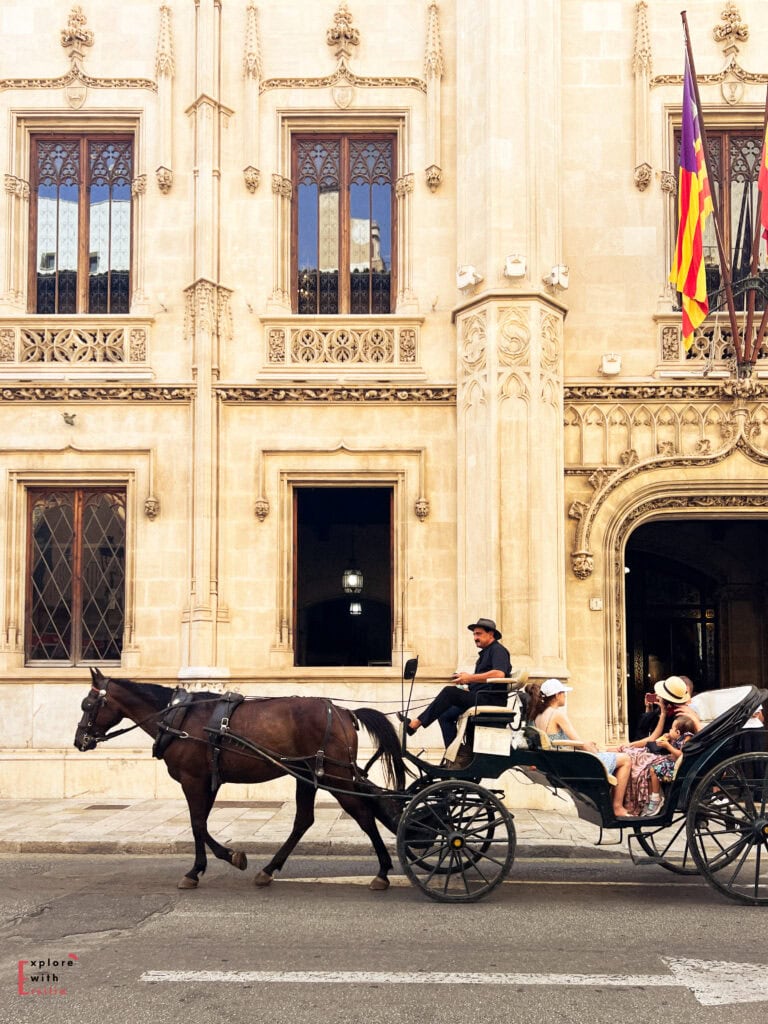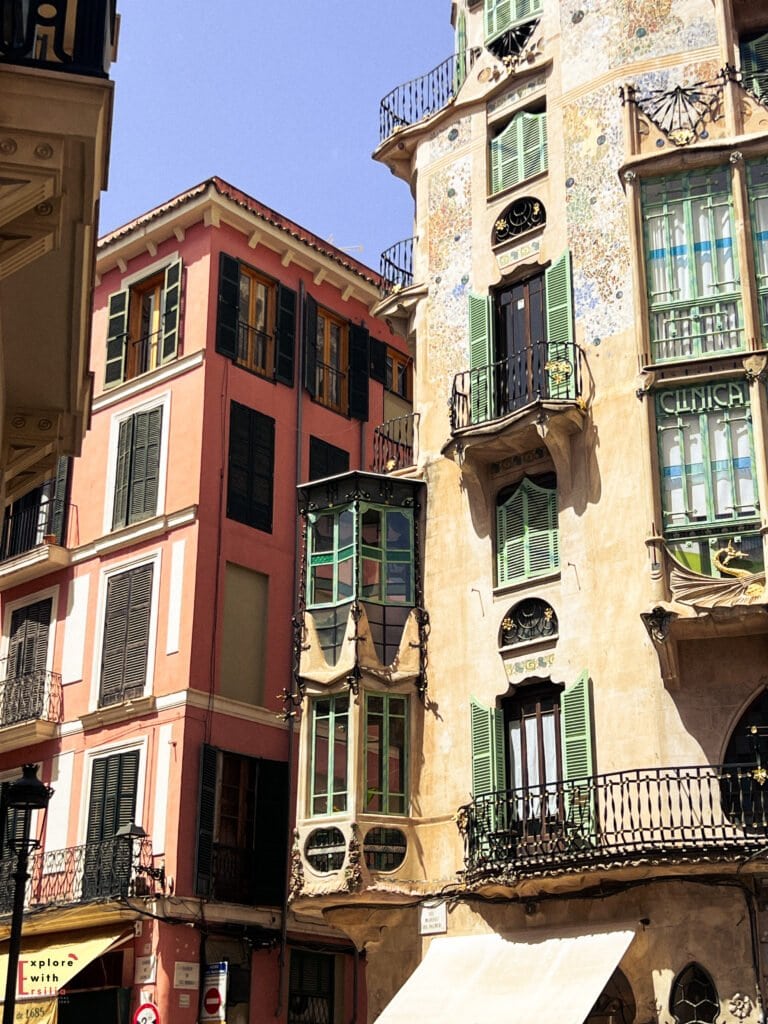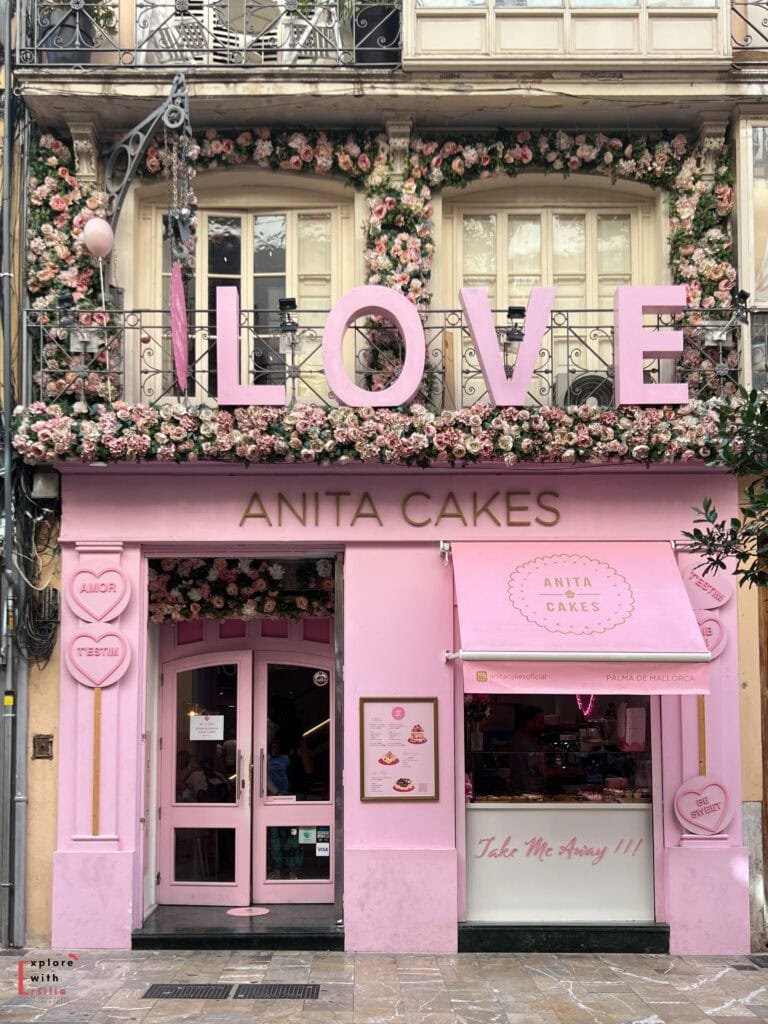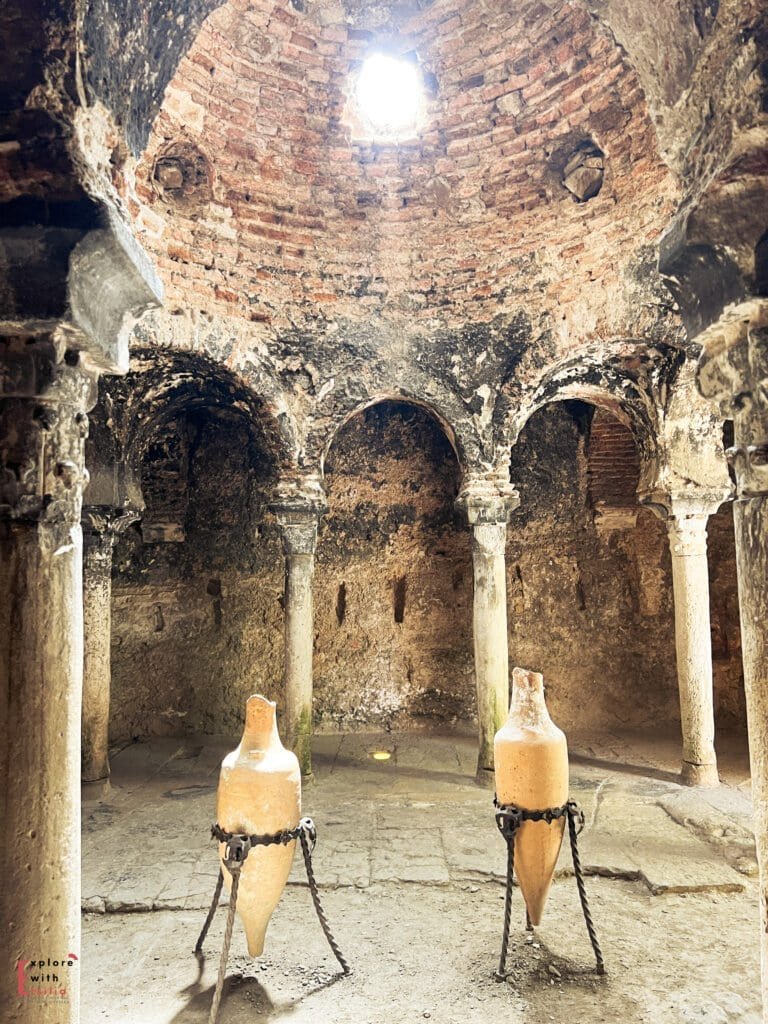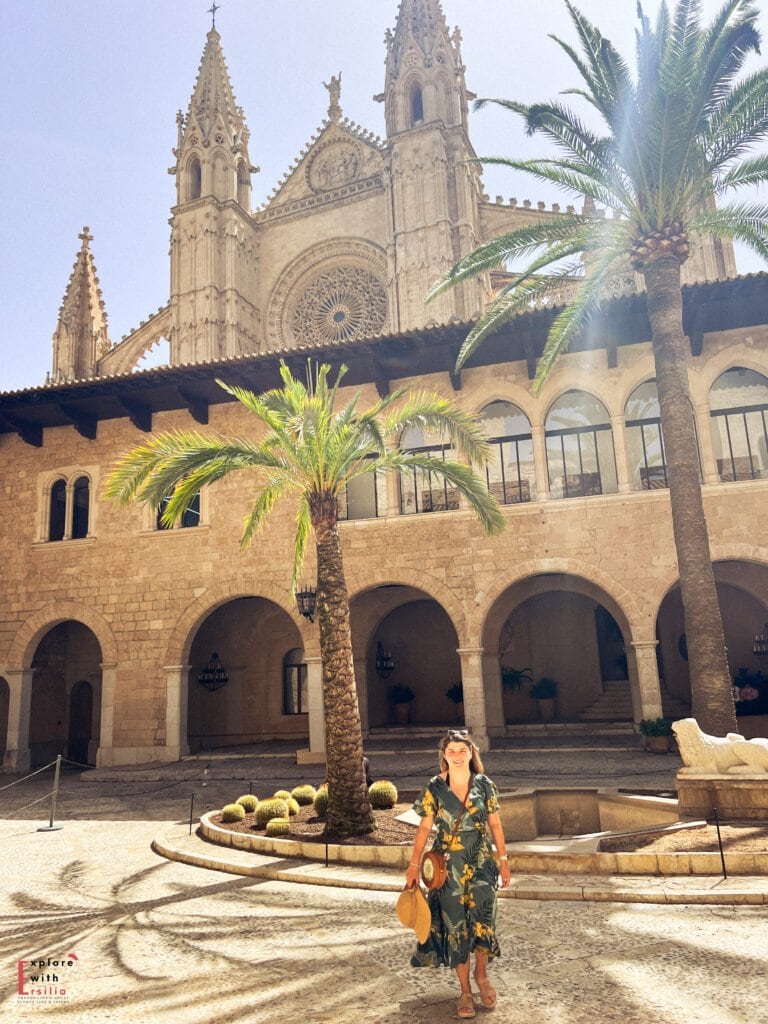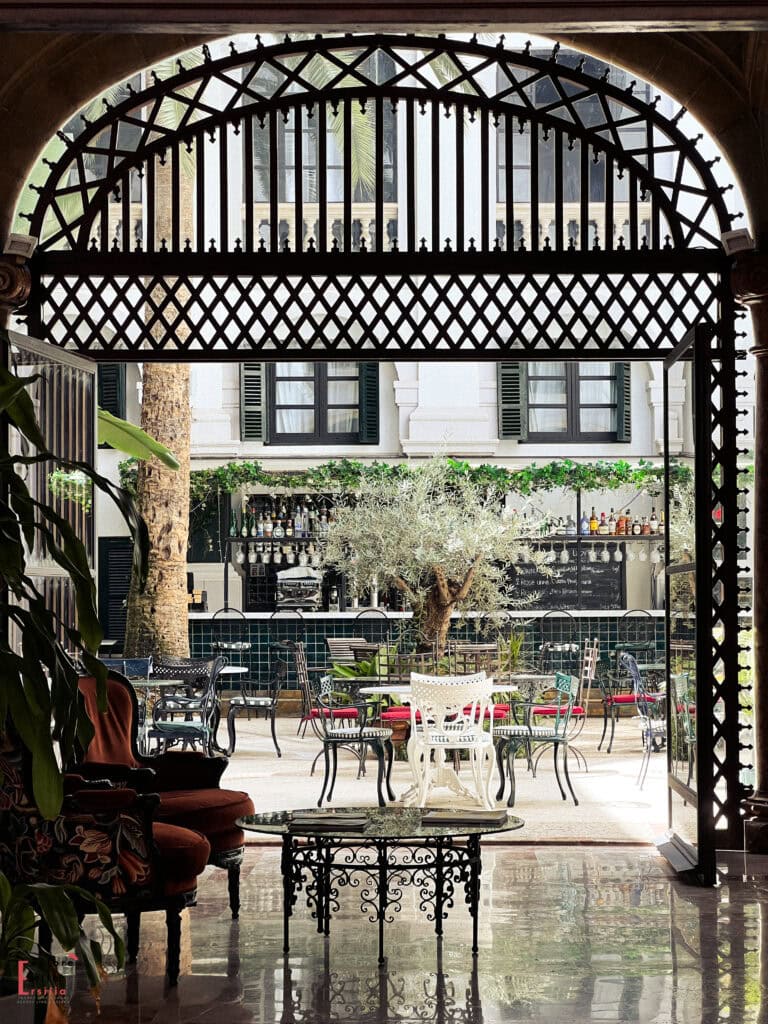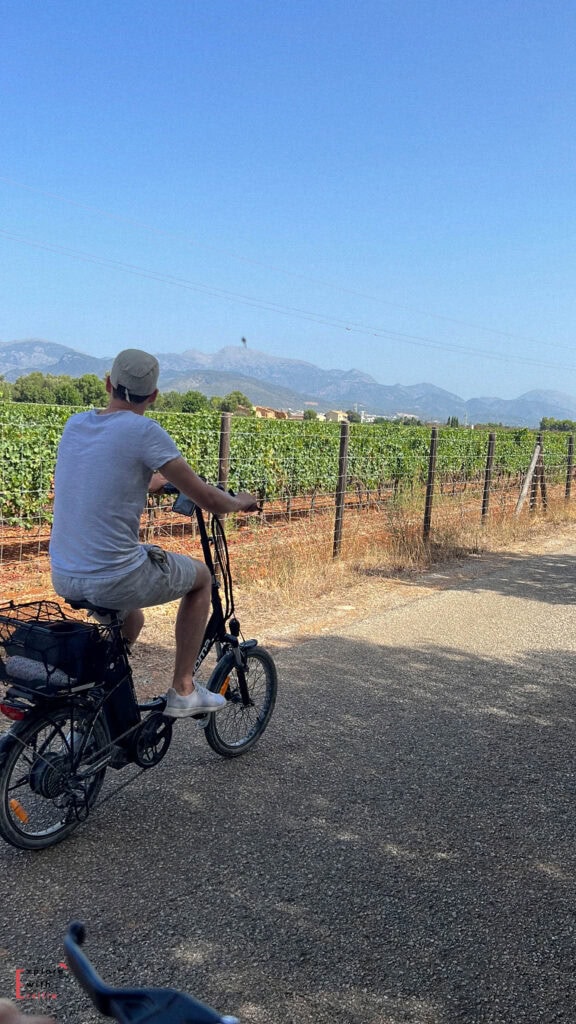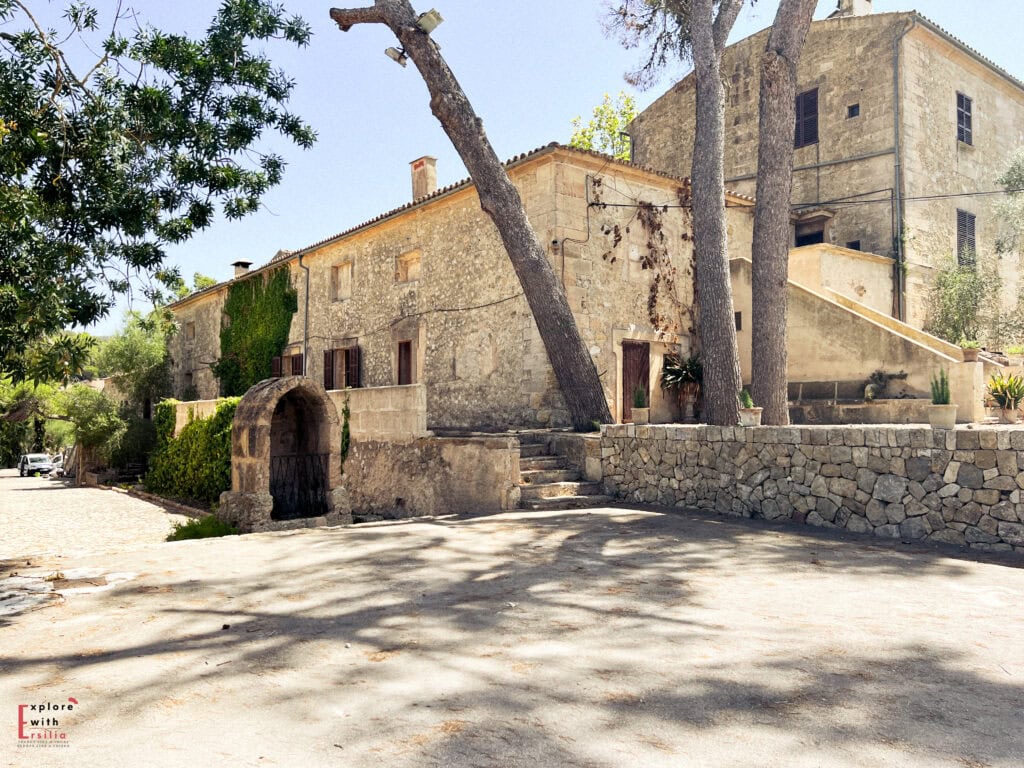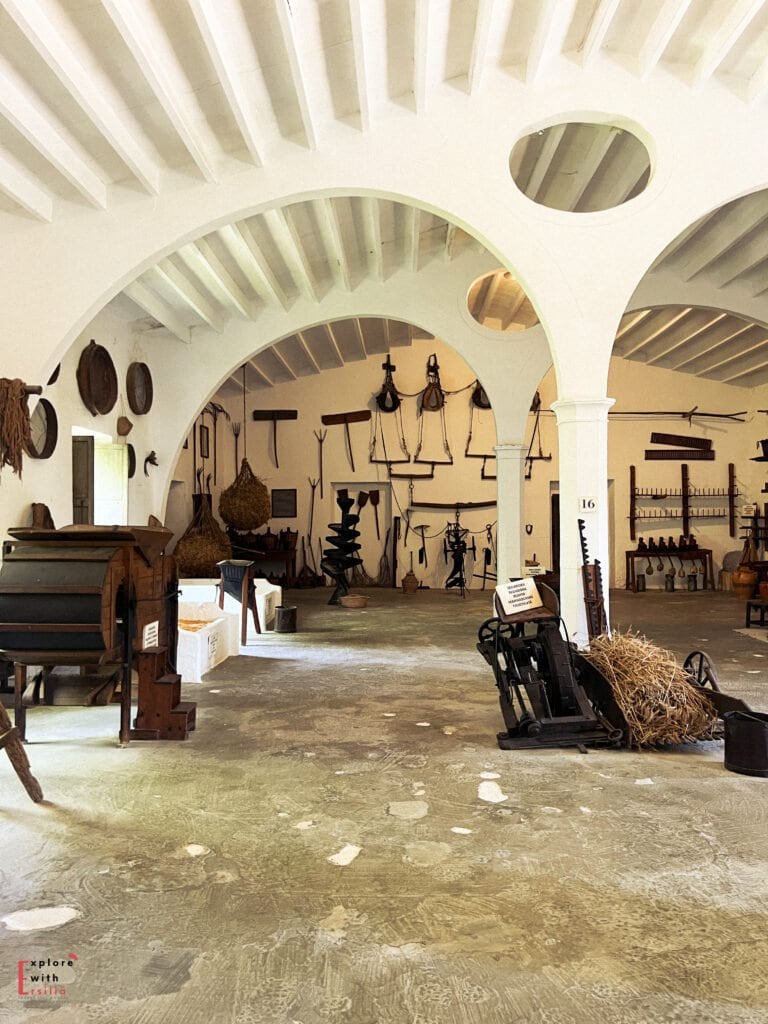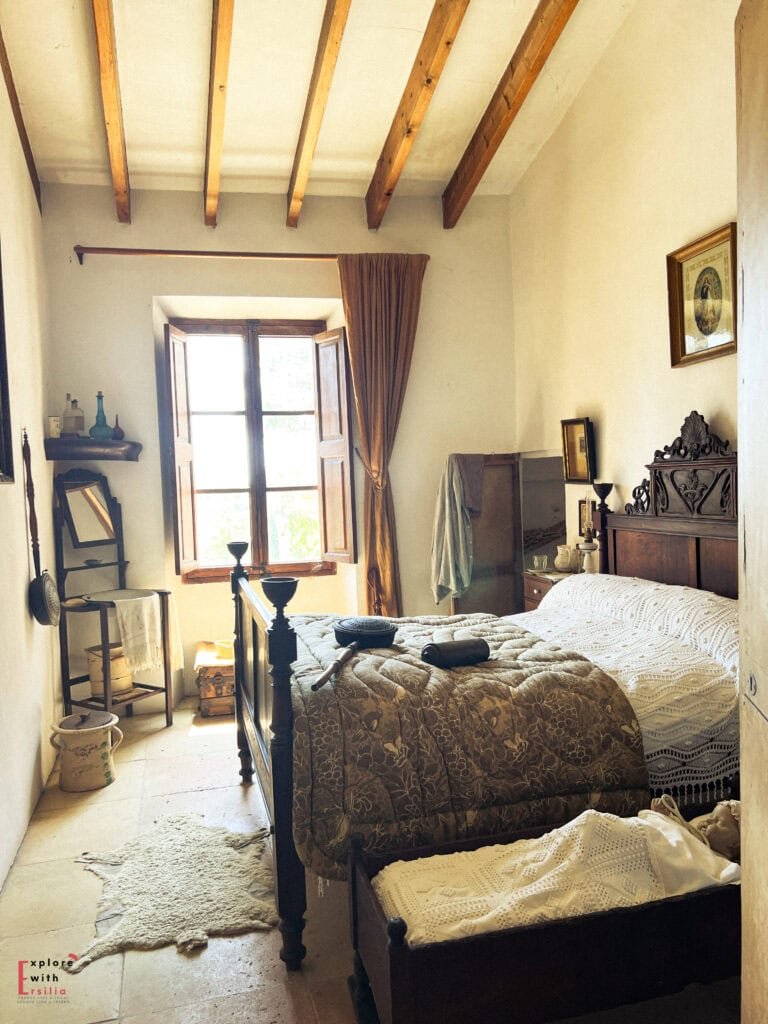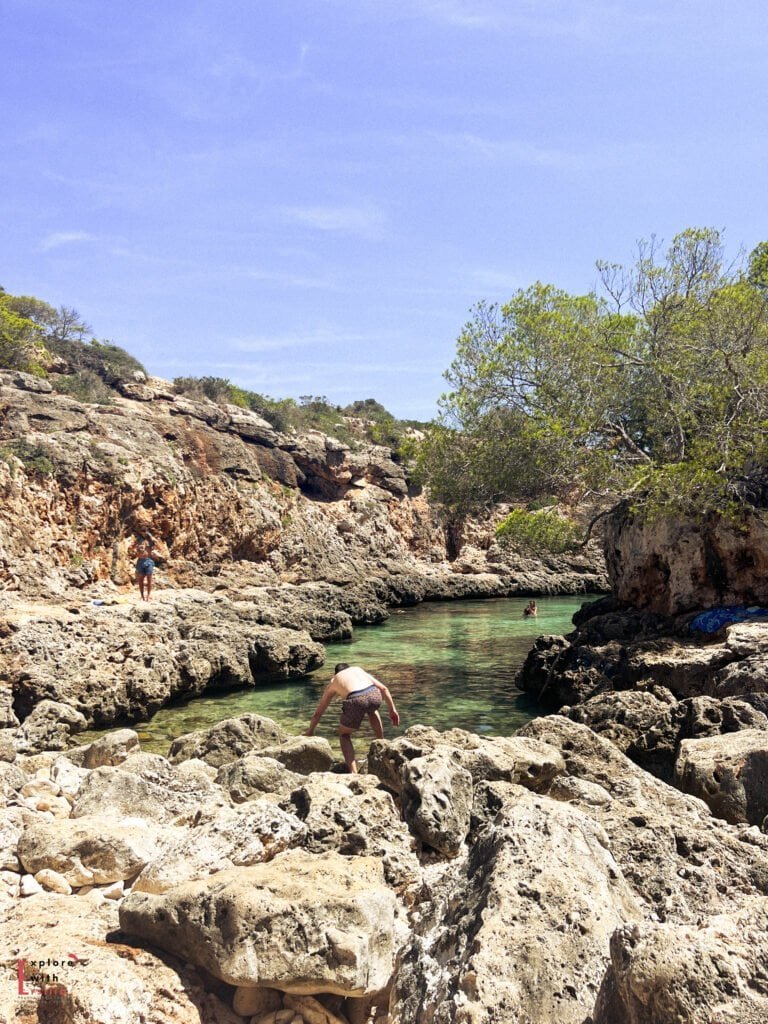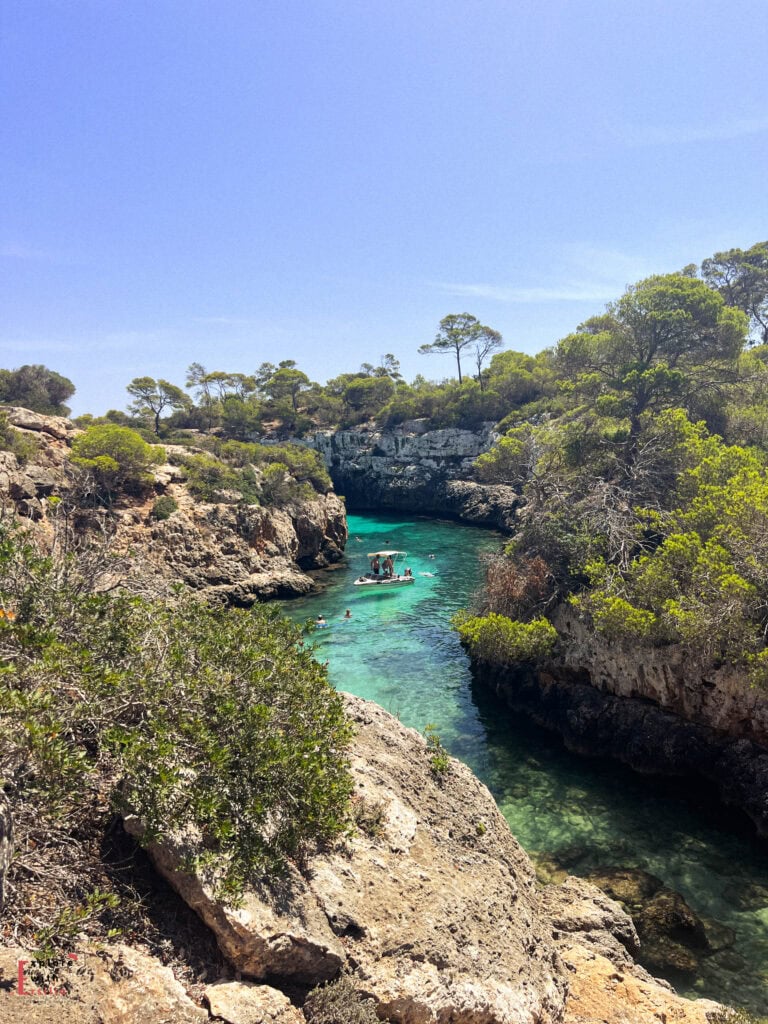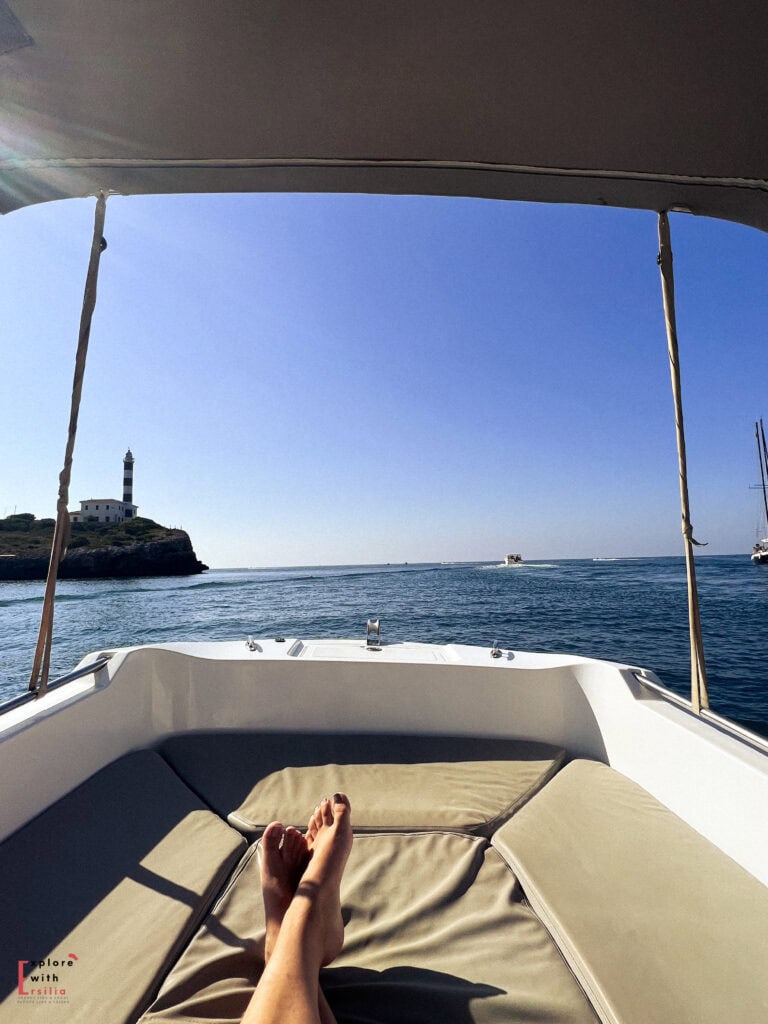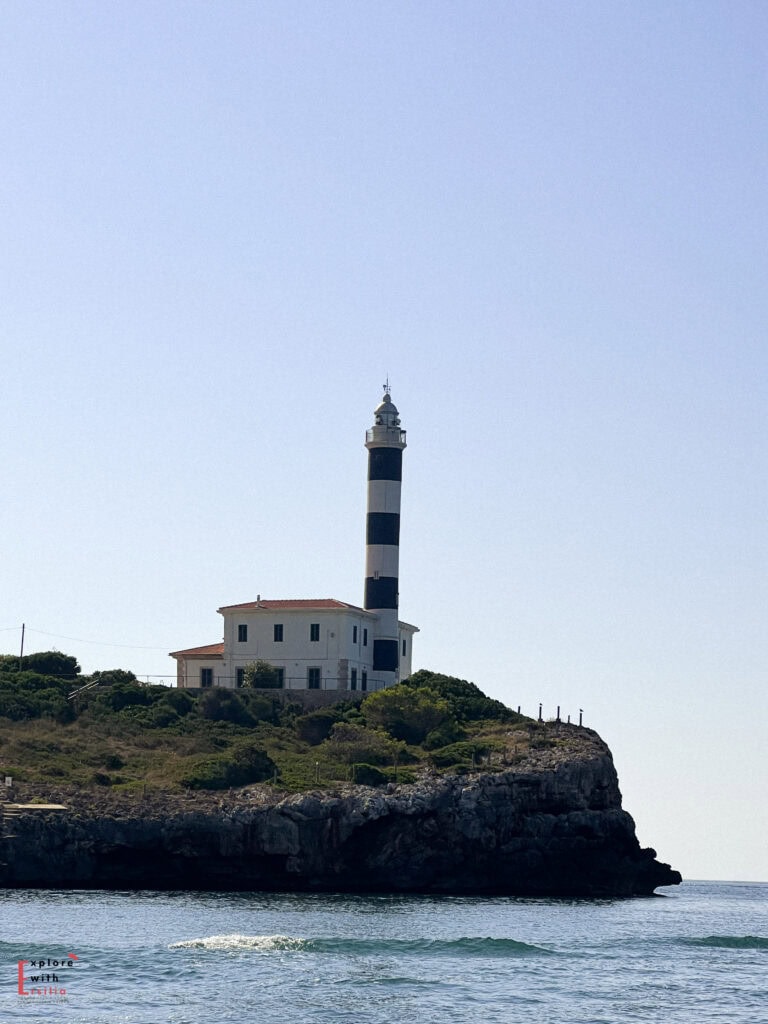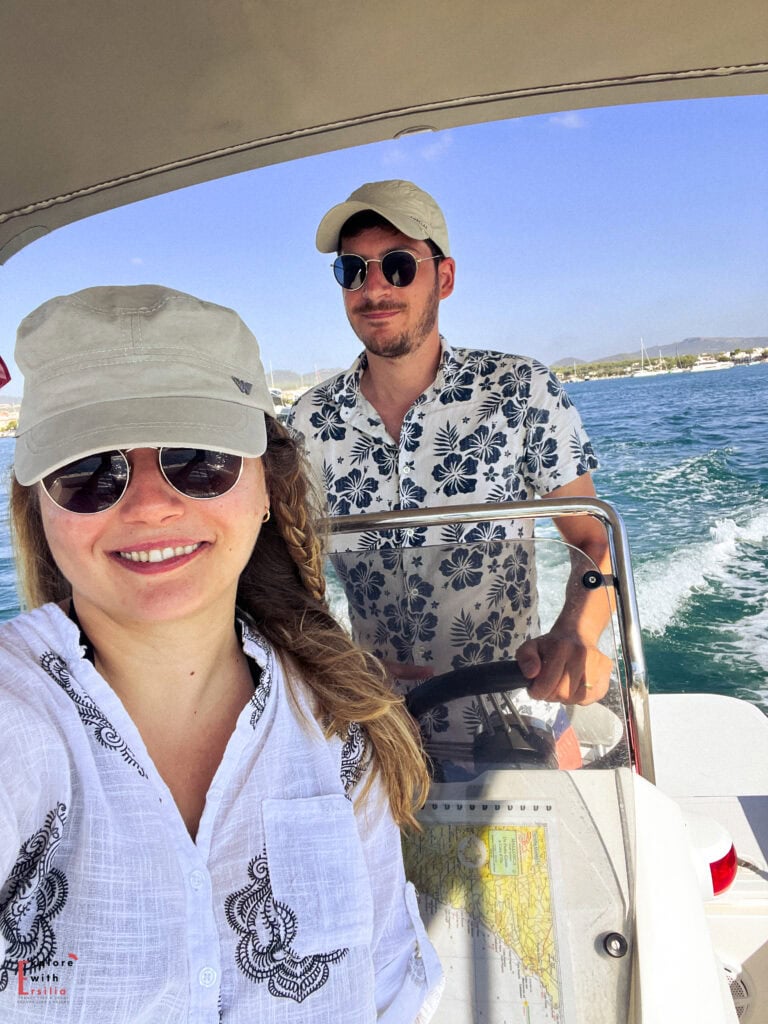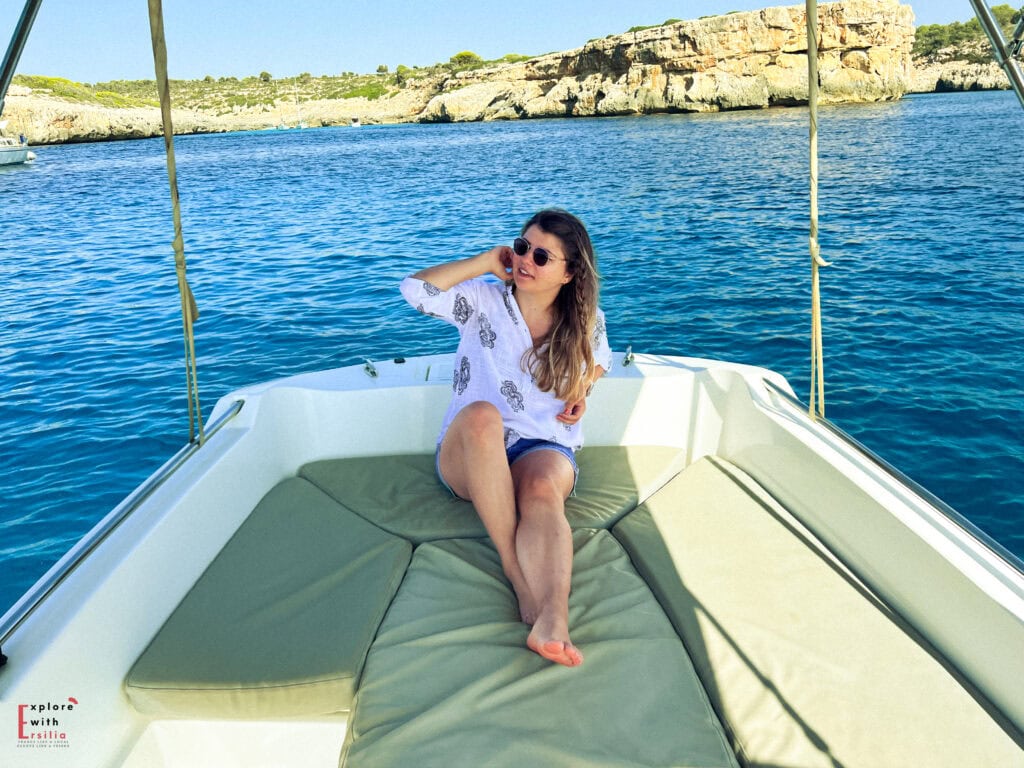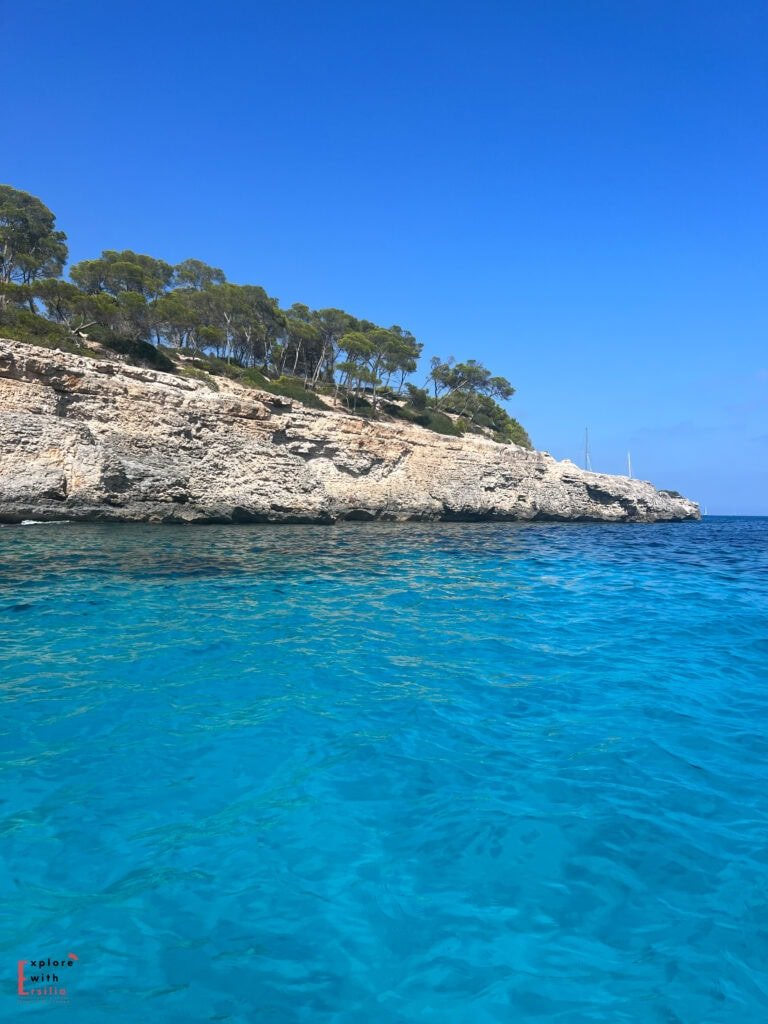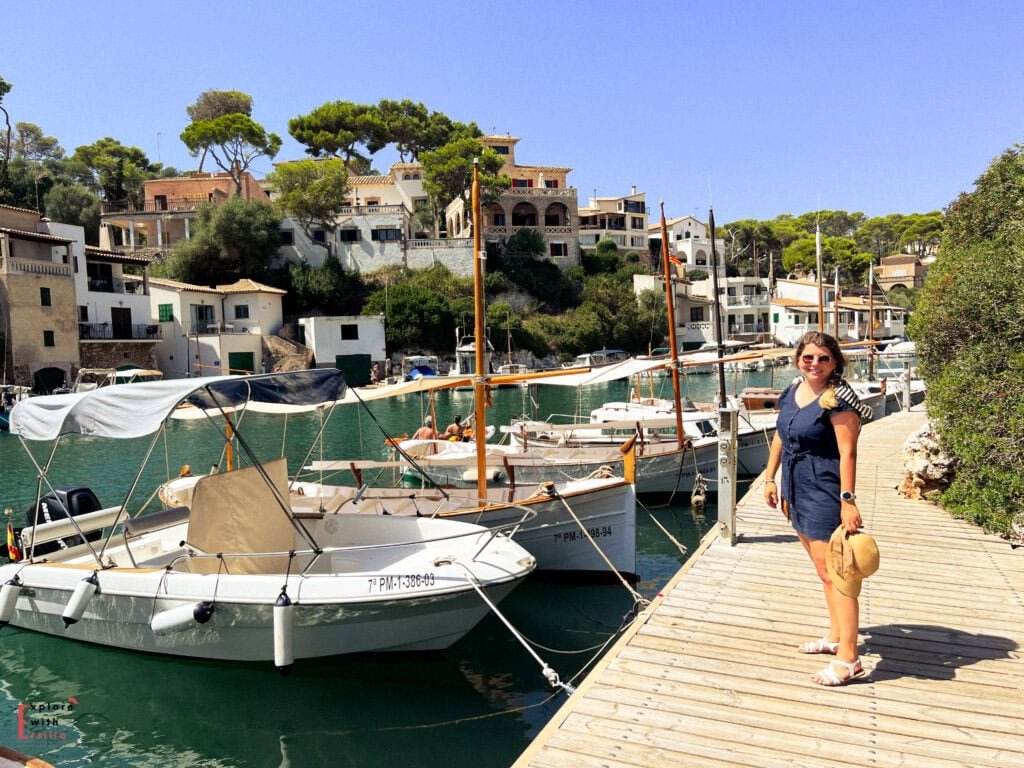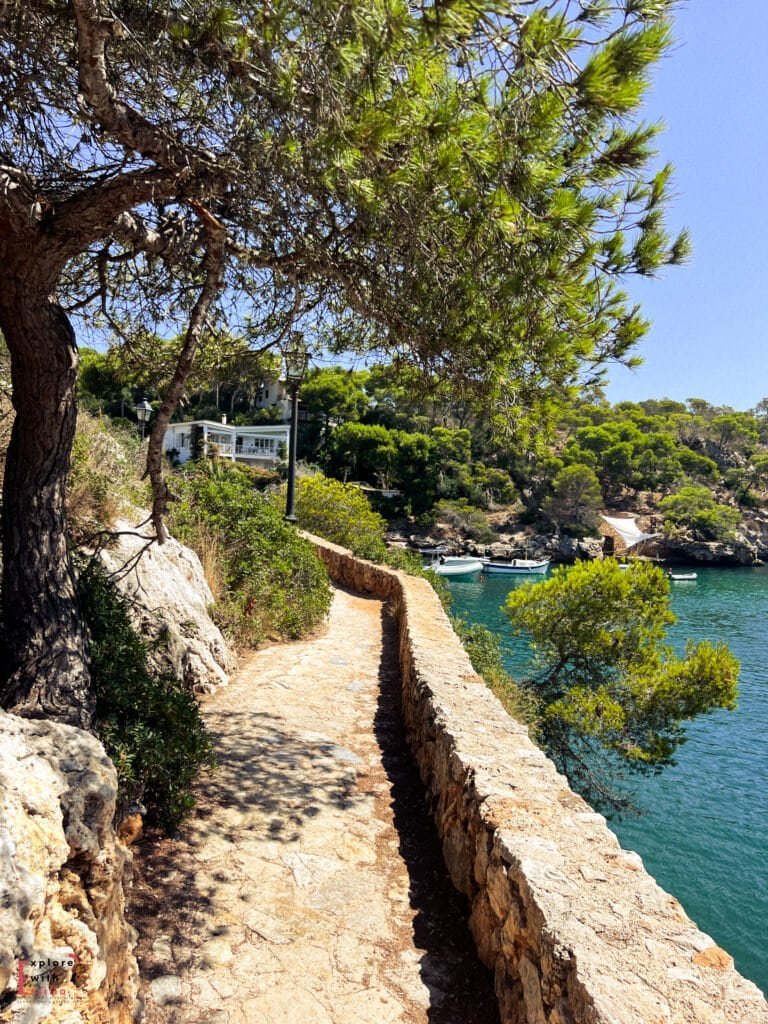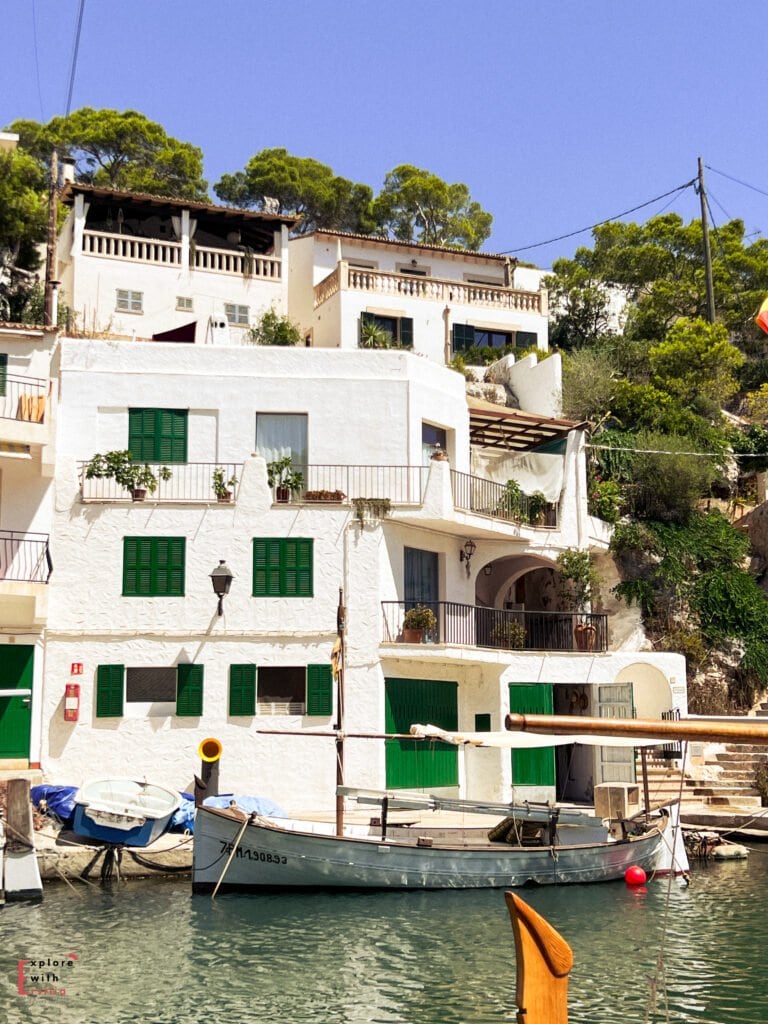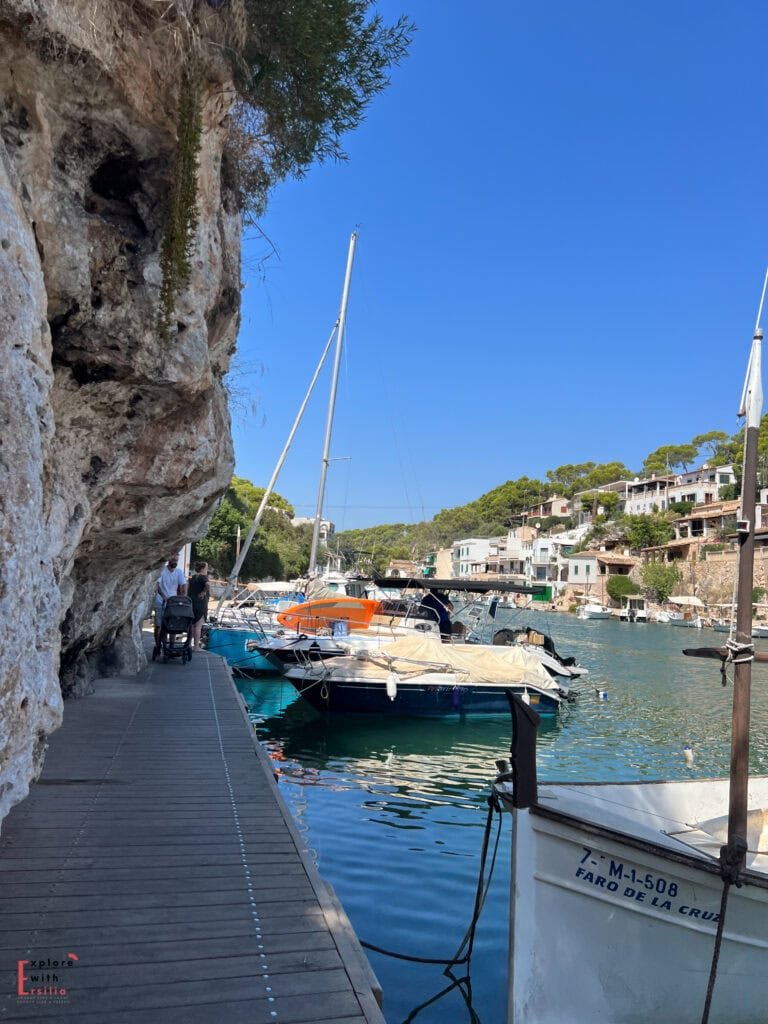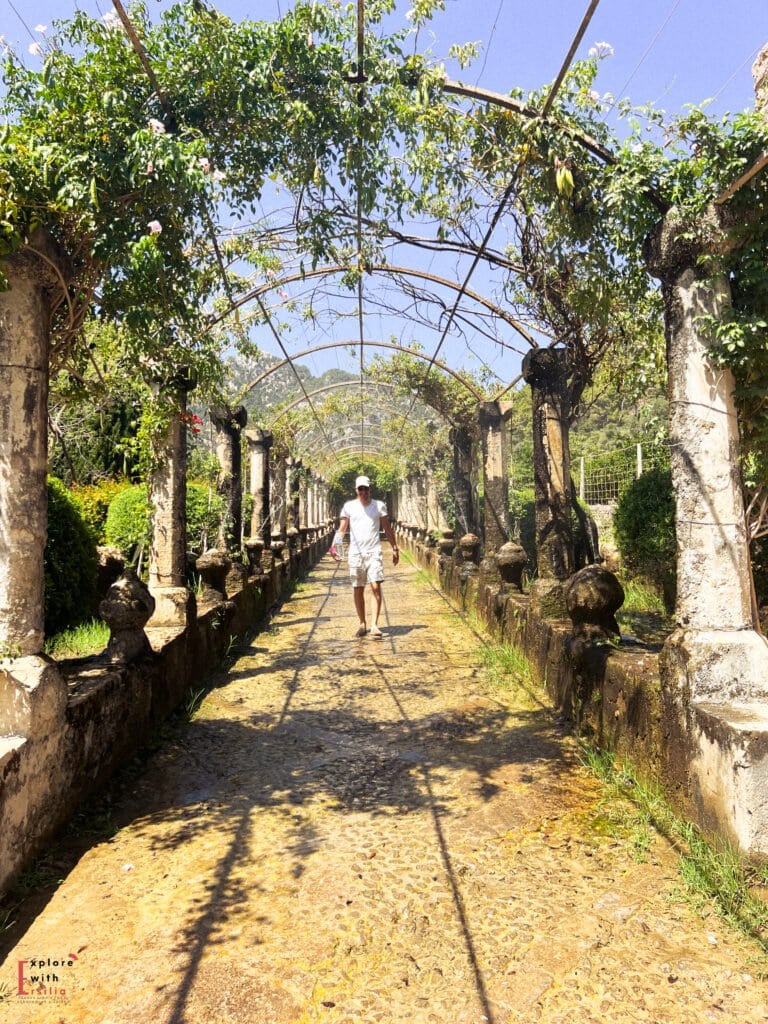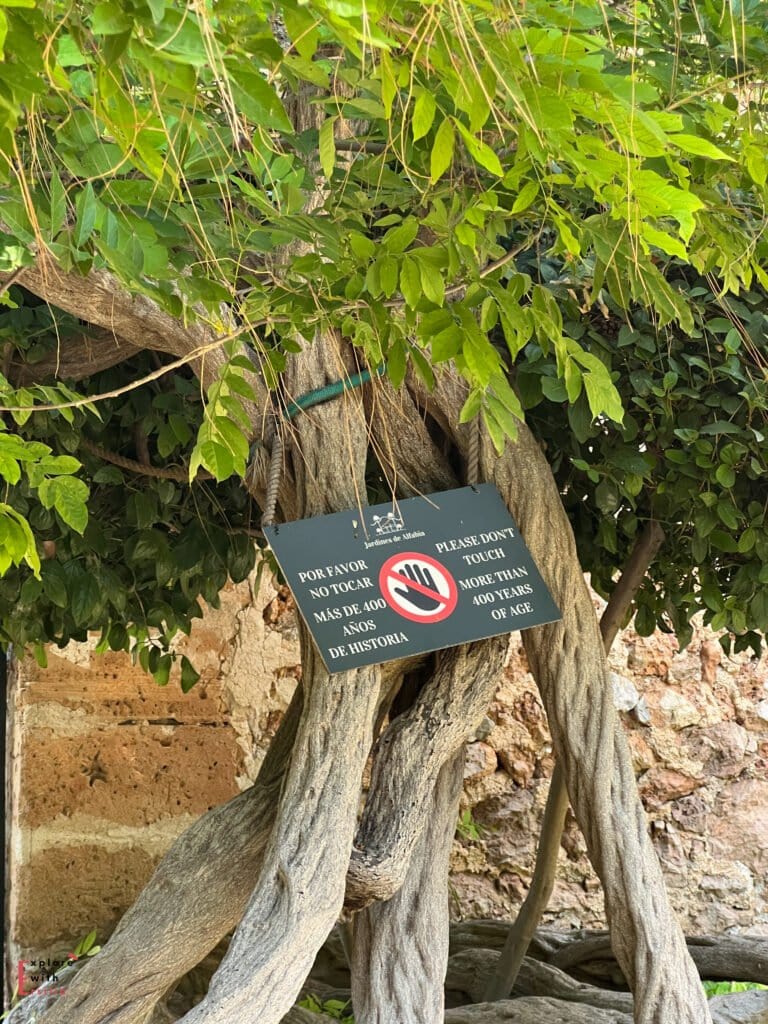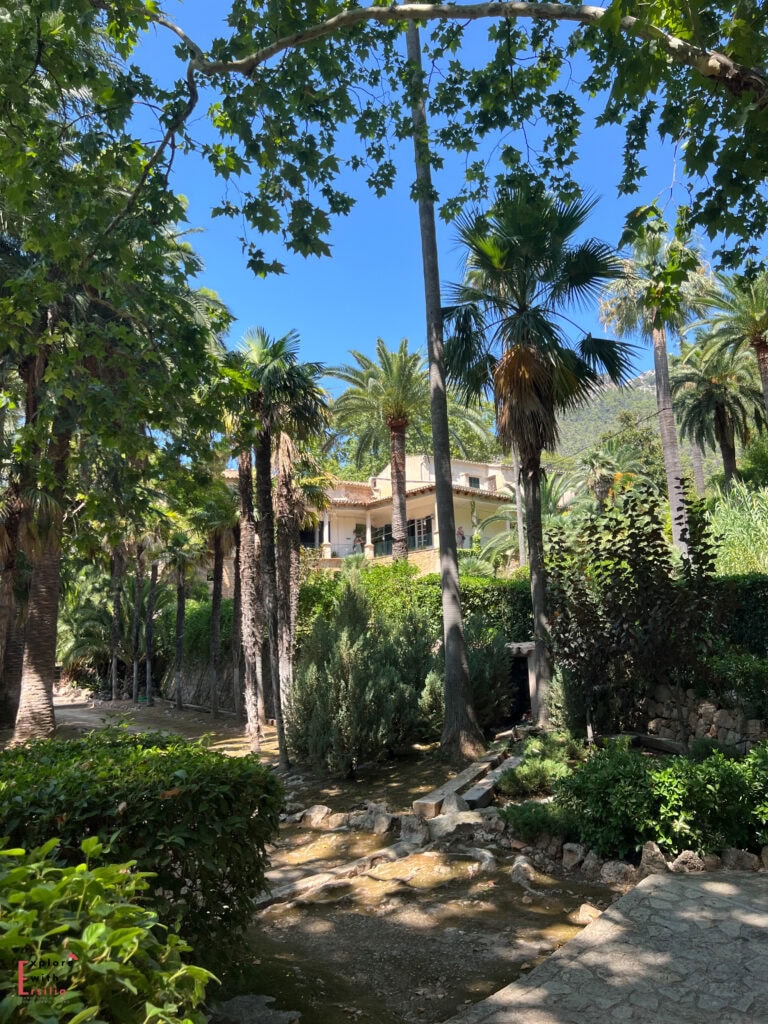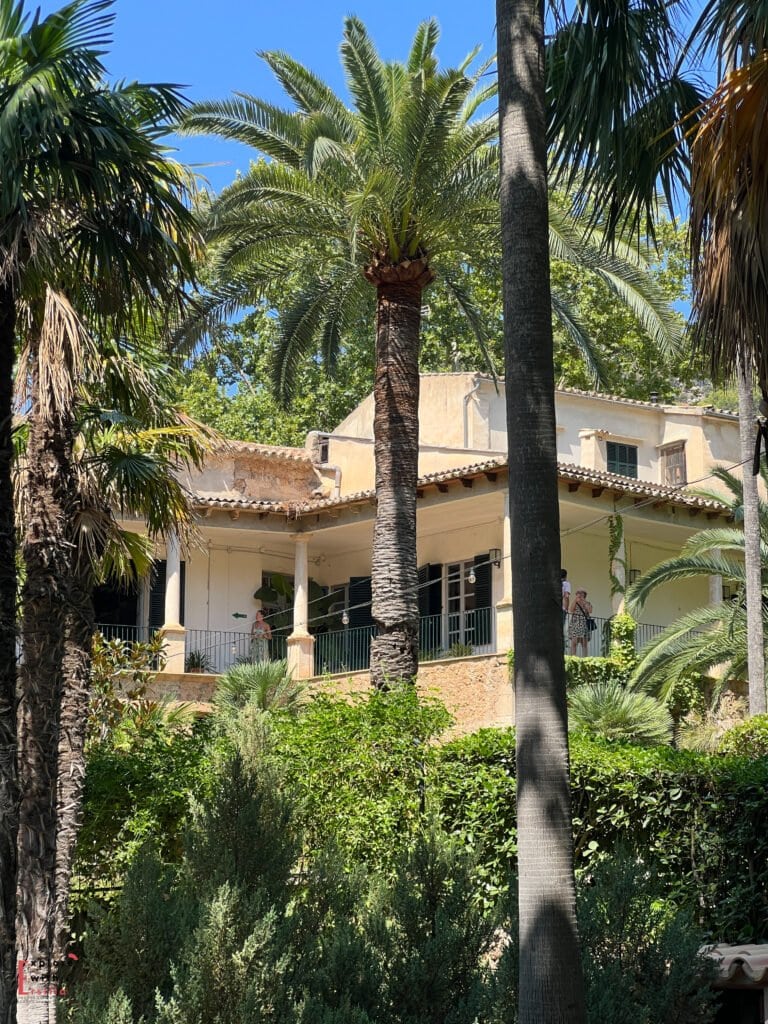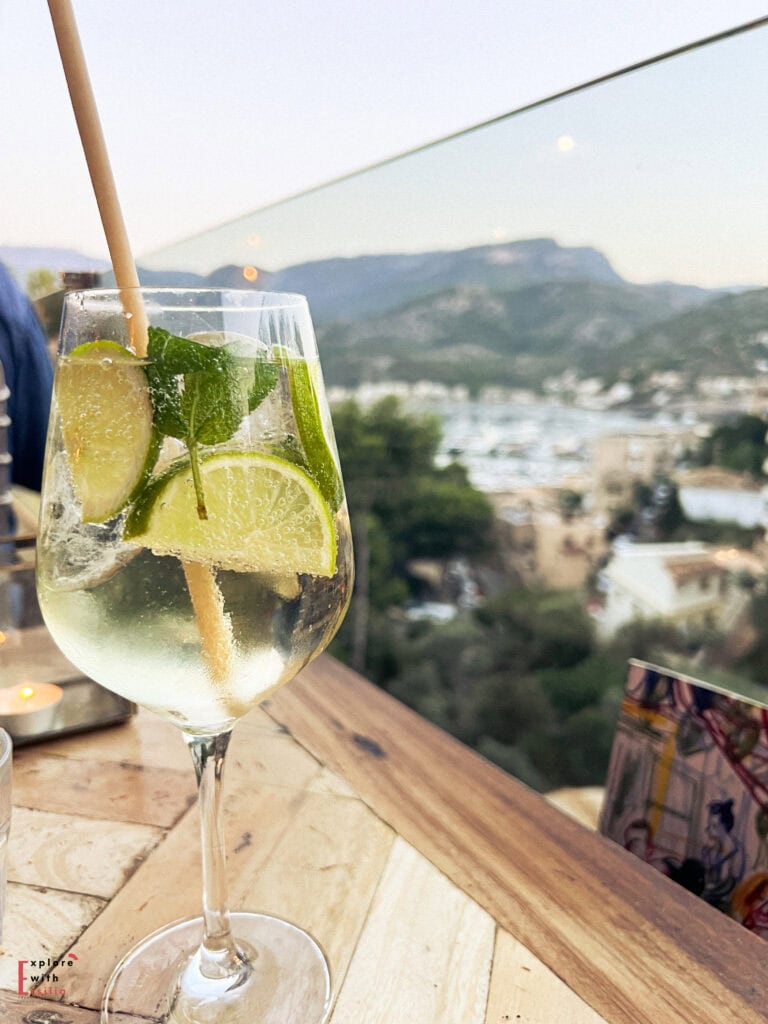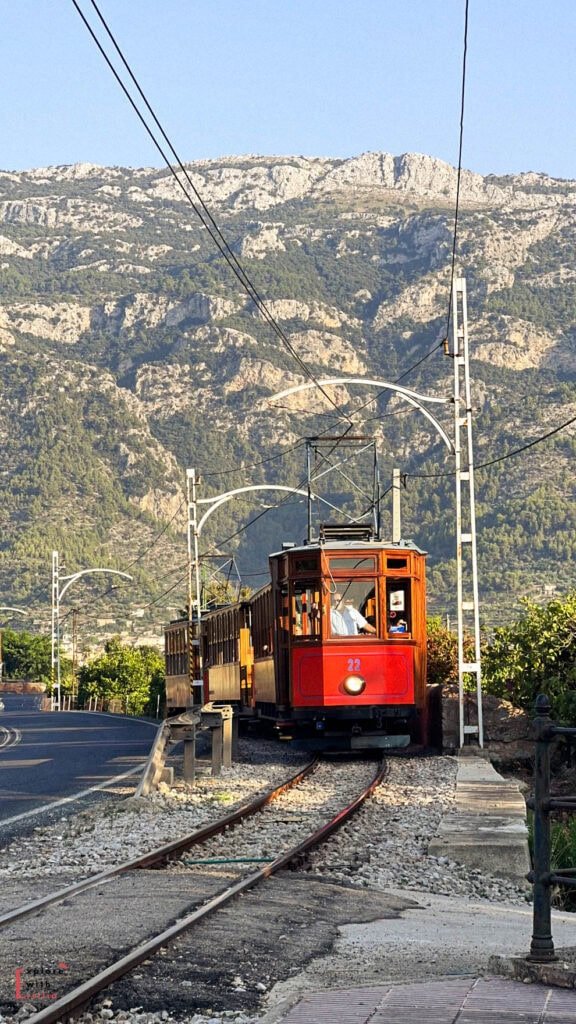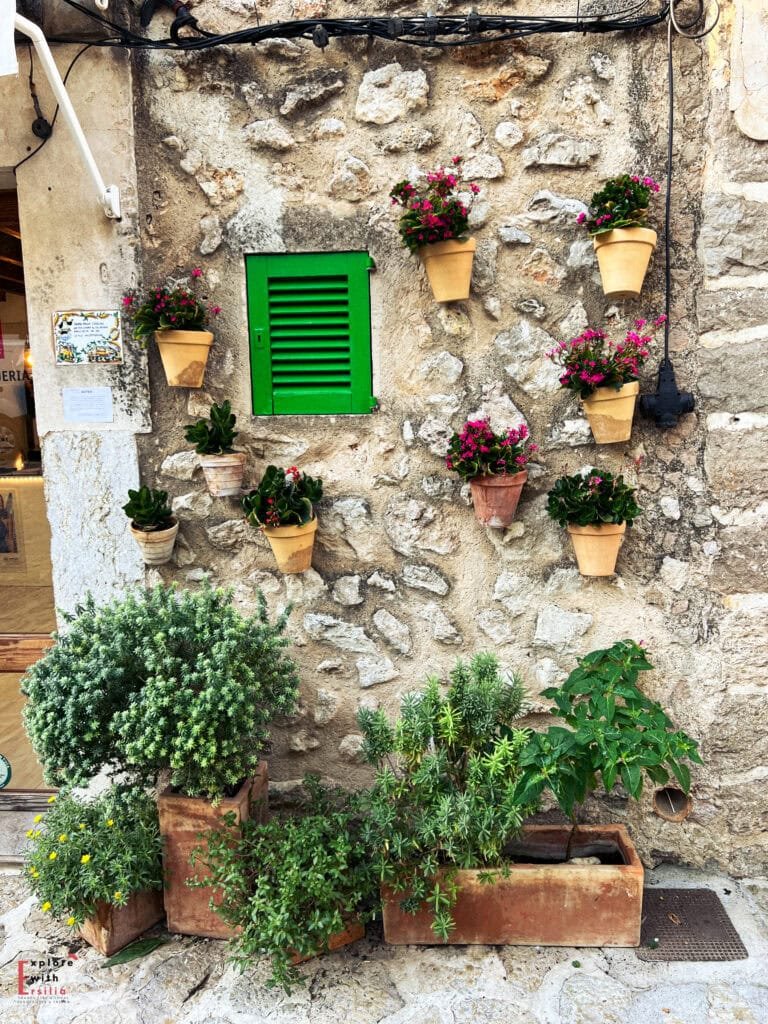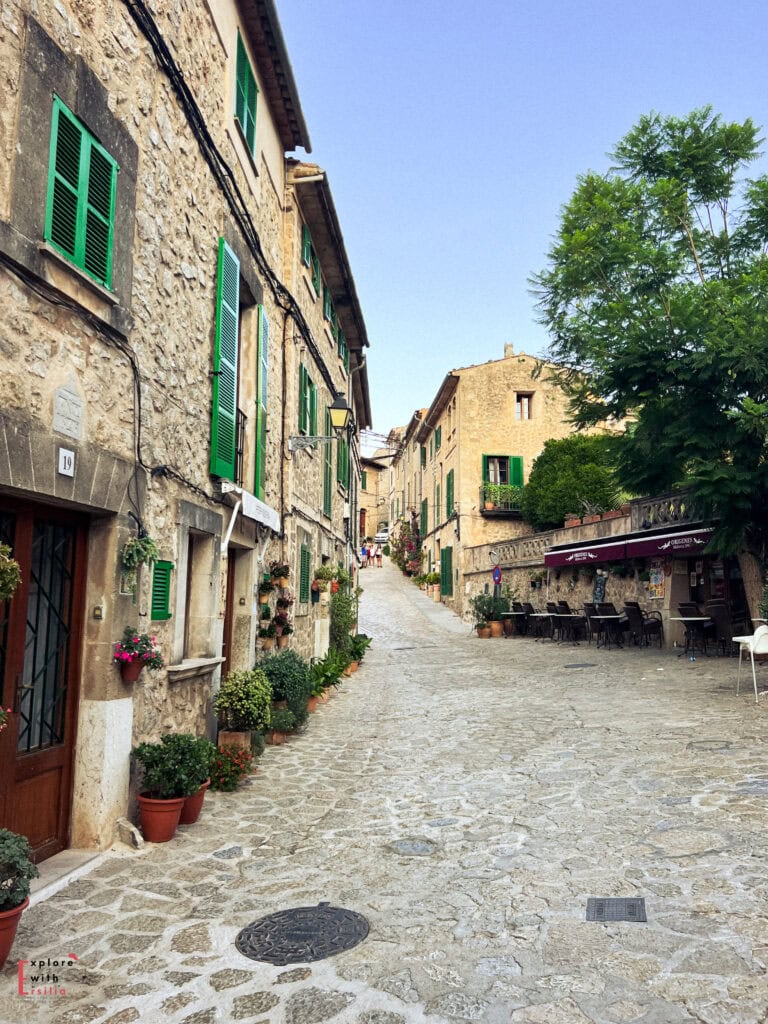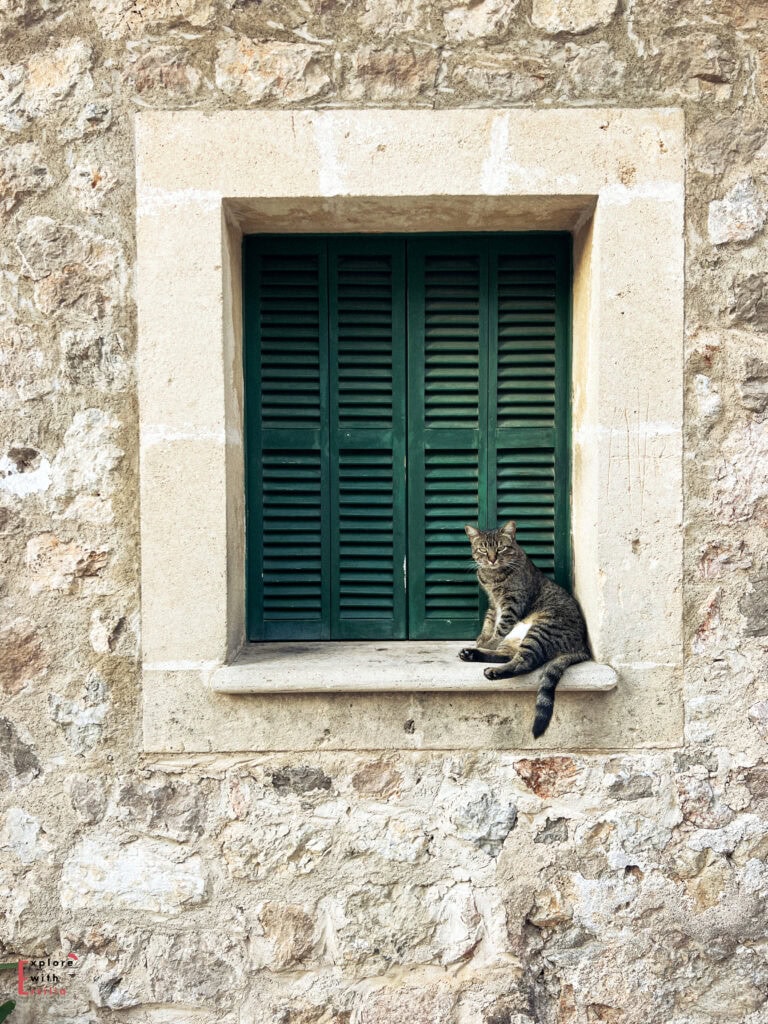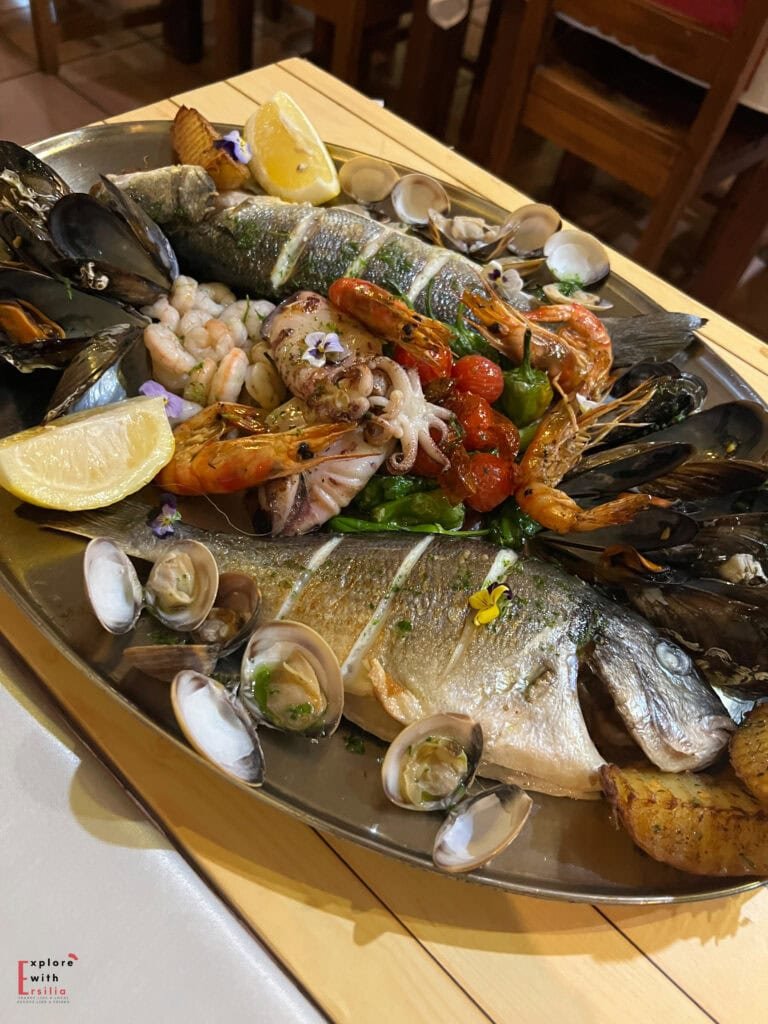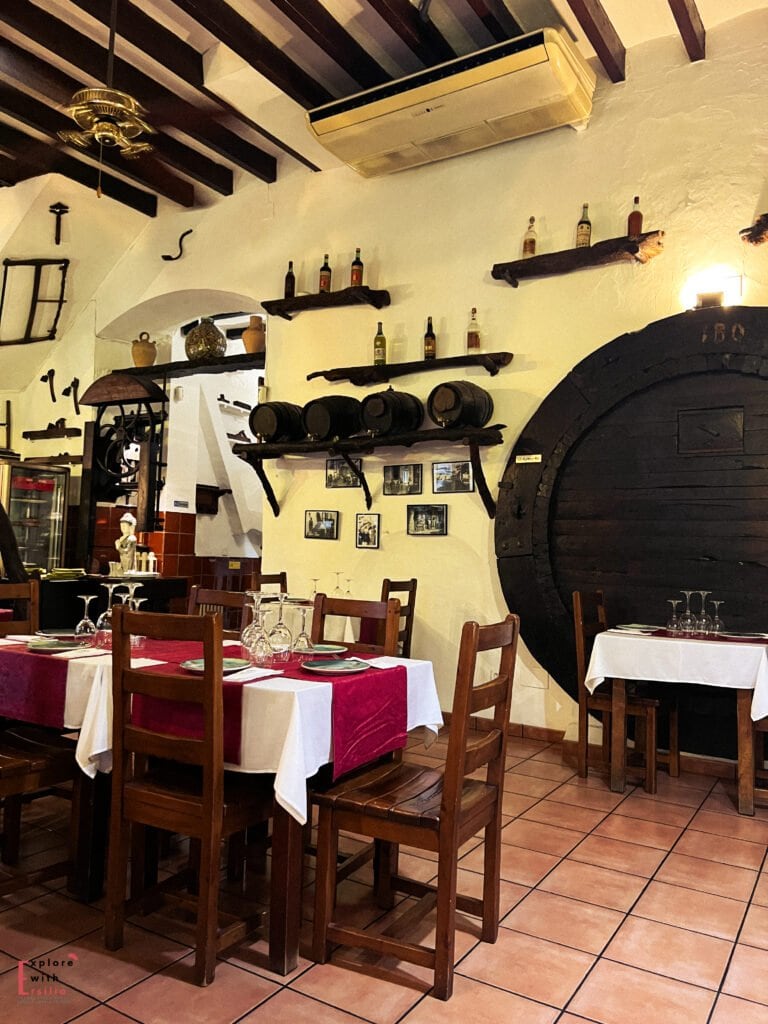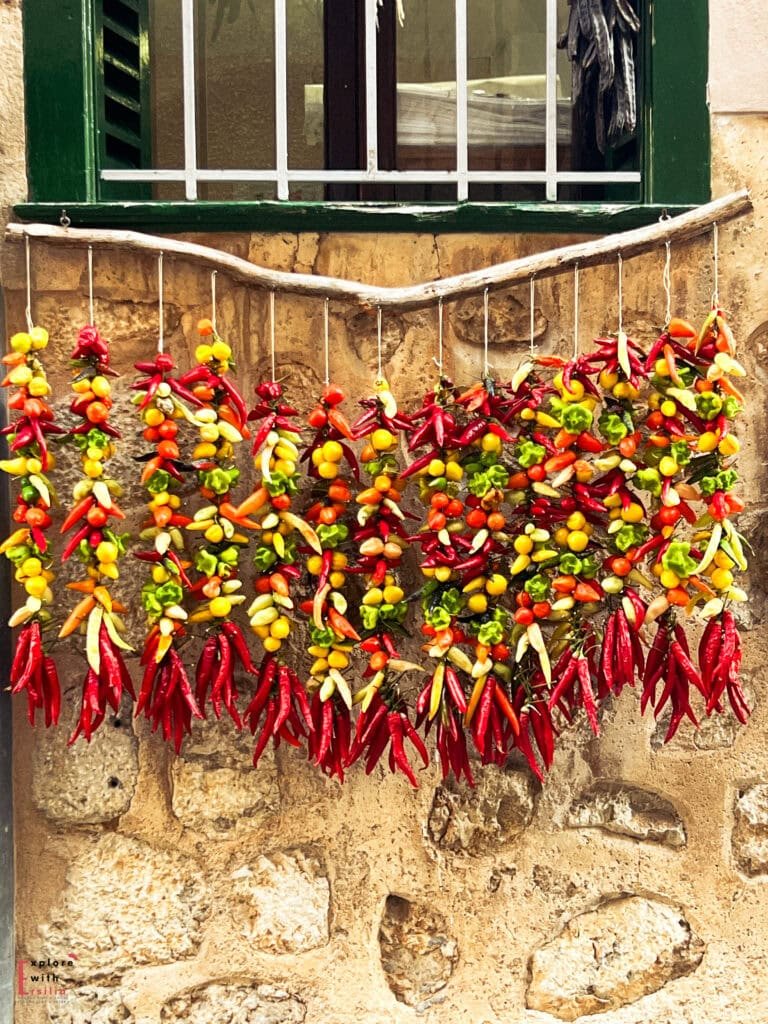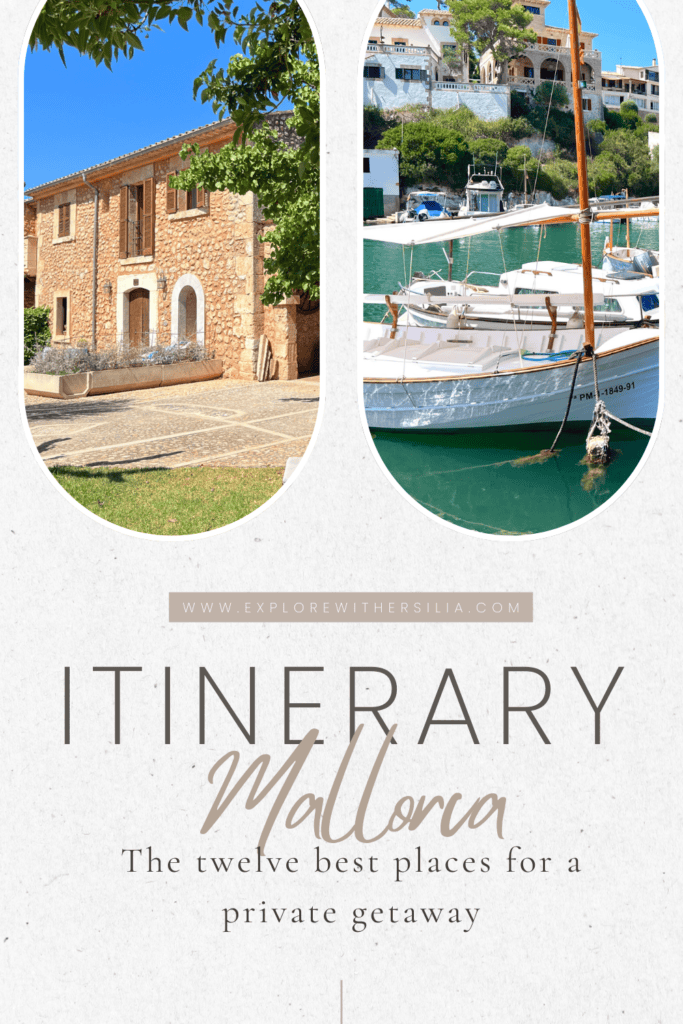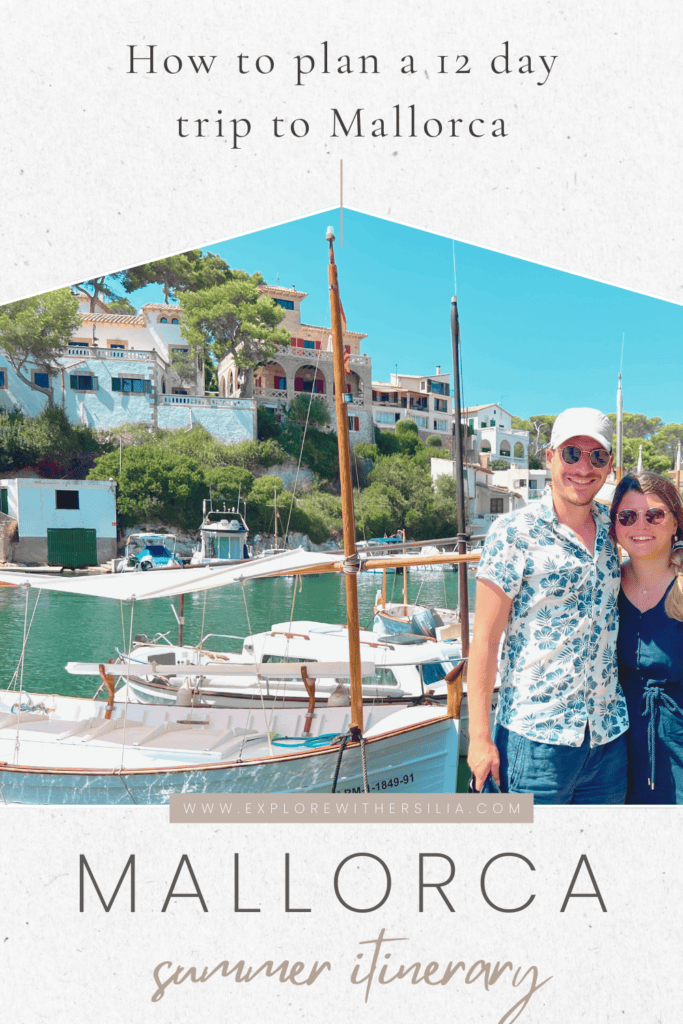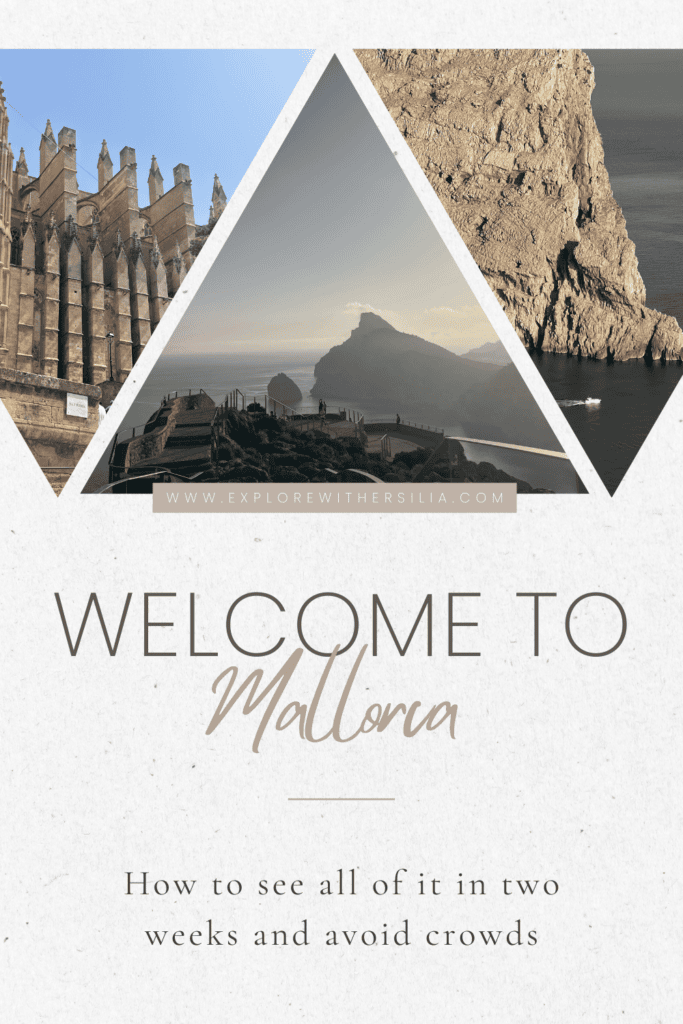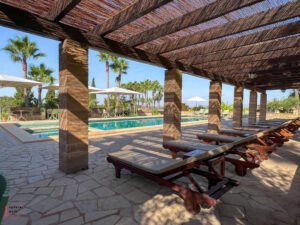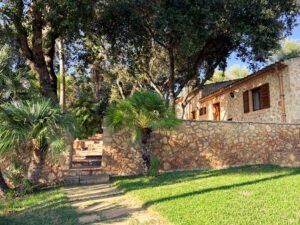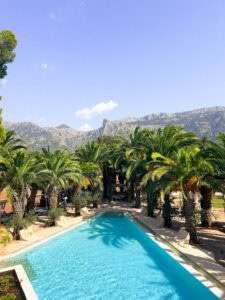Explore with Ersilia contains affiliate links and is a member of the Amazon Services LLC Associates Program. If you make a purchase using one of these links, I may receive compensation at no extra cost to you. affiliate links are how we keep this content free. A huge thanks if you use these as it helps a lot! See the Full Policy for more information.
Ever found yourself planning a summer vacation in January? That was me last year, sitting at my computer, frantically searching for the perfect August destination. I know what you’re thinking—August in Europe? Absolute madness! But with my husband’s new job limiting our options, I needed somewhere magical yet manageable.
When Mallorca appeared in my search results, I initially hesitated. Images of overcrowded beaches and sweltering heat made me nervous, but those crystal-clear turquoise waters and stunning landscapes were impossible to resist! In a moment of courage (or perhaps temporary insanity), I clicked “purchase” on those plane tickets and committed myself to planning a 12-day adventure during Europe’s peak tourist season.
What followed was a journey that completely transformed my understanding of this beautiful island. Yes, Mallorca gets crowded in August—but with careful planning, I discovered an authentic, peaceful side of the island that most tourists never see.
This isn’t a perfect, idealized itinerary, but rather the real way we organized our days. It might help you understand the distances, which spots pair well together, and how to balance beaches, mountains, culture, and relaxation. I’ll share where we stayed, ate, and how long we spent at each place.
Let’s dive in!
EVERYTHING YOU NEED TO KNOW ABOUT MALLORCA, IN SHORT
In a hurry? here is everything you need to know !
all my tips from our 2 week trip

Where to stay
best for eco-solo travelling: Agroturismo Es Quatre Cantons (you can read about my experience here)
best for couples: Finca Ca N’ai (I wrote about our stay here) or Finca Albellons
best for families: Finca Binibona Parc Natural, Agroturismo Es Quatre Cantons
best for luxury: Hotel Creu de Tau Art&Spa, Finca Ratxo Hotel
sea view that doesn’t break the bank: Hotel Sis Pins, Universal Hotel Aquamarin
splurge like a star: La Residencia, A Belmond Hotel

Must see & hidden gem
not to miss:
- Cap de Formentor sunrise/sunset
- Palma Cathedral and Arabic Baths
- Tramuntana Mountains (UNESCO World Heritage Site)
- Boat rental to explore hidden coves
- Sa Calobra (but go early!)
hidden gem:
- Museu Etnològic dels Calderers
- Sineu village
- Alfàbia Gardens
- Cala Tuent
- Inland wine country around Binissalem

Best restaurants & bars
great restaurants:
Vista Mar in Sant Elm
Neni Port Sóller
La Botana in Palma
Cas Carreter in Sóller
local specialties:
- Sobrassada (spicy spreadable sausage)
- Panades (meat or vegetable filled pies)
- Ensaïmada (spiral-shaped pastry)
- Tumbet (Mallorcan ratatouille)
- Fresh seafood paella

Best photo spot & activity
best photo spot:
- Son Marroig lookout
- Mirador Es Colomer
- Port de Sóller horseshoe bay
- El Calvari steps in Pollença
- Sunrise at Cap de Formentor
best activity:
- Sea kayaking around Port de Pollença
- Vintage tram ride from Sóller to Port de Sóller
- Boat rental on east coast
- Wine tasting in Binissalem
- Hiking in Tramuntana Mountains
Is it too long to spend 2 weeks in Mallorca ?
No! I was afraid it would be too long but at the end I wished I had some more time to spend! 2 weeks are great to see many places but you could easily spend even more time here. There’s just so much to discover beyond the beaches – the mountains, villages, hidden coves – I honestly could have stayed another week!
Should you stay in a single place or choose multiple bases ?
It depends on your style of traveling. If you prefer not to move around, stay in the center of the island. In around 30 minutes to one hour, you can reach almost any destination, but that would mean a lot of driving. We split our 2-week stay in 3 places (north, center and south) and it was perfect! This allowed us to really experience different parts of Mallorca and minimize daily driving time. I loved waking up in different landscapes throughout our trip!
Is it hard to drive in Mallorca ?
We are coming from France where we have a lot of small villages and roads, so we are used to driving in small places and on mountains, but if you’re not used to these, it might get difficult to drive here, especially in the mountains. The southern region is a lot easier to drive in. Those hairpin turns on the way to Sa Calobra are not for the faint of heart! If mountain driving makes you nervous, I’d recommend staying in the flatter areas and taking organized tours to the mountain regions.
How much budget do you need for a day ?
Most touristic places have paid entries. La Seu Cathedral (€10), Caves of Drach (€15), Alfàbia Gardens (€9), and Palma Aquarium (€34) are among the most popular attractions.
But to eat, you can start with as little as 2 euros for a filled pastry or go as high as you wish for a fancy restaurant. There are many expensive restaurants around the island, so check the prices before taking your place at the table. But we found that usually 25 euros were enough for a meal and a drink. The inland restaurants were much more affordable than the coastal ones, and often better quality too!
Planning Our Mallorca Adventure
The first thing I learned about Mallorca is that most crowds concentrate around the perimeter, where those famous beaches are. Most visitors base themselves in or around Palma de Mallorca or on the east coast to be close to those postcard-perfect blue coves.
I read somewhere that Mallorca is like a donut—most tourists think the only “interesting and delicious” part is the outer ring. This got me thinking: if everyone stays around the edges, why not stay right in the middle?
After extensive research across booking.com, Expedia, and Airbnb (always check multiple sites for the best deals!), I chose Agroturismo Es Quatre Cantons near Binissalem as our first base. But two weeks felt too long for a single location—I love moving around to experience different vibes and minimize daily driving.
So I decided on a three-base approach:
- Binissalem (central) for exploring the authentic inland villages
- Cas Concos (souteheast) for accessing the famous calas
- Sóller (northwest) for mountain adventures and coastal charm
Each location offered a completely different experience of Mallorca, and by the end of our trip, I felt like we’d visited three different islands!
Day 1: Arriving in Mallorca & Cap de Formentor Sunrise
- Breathtaking viewpoint at Cap de Formentor’s Mirador Es Colomer
- Scenic stone pathway and steps at Mirador Es Colomer
We arrived in Mallorca by ferry from Barcelona. Living in Toulouse, this was the easiest way to bring our car with us. There are multiple ferry options, but we chose the overnight journey departing around 11PM with sleeping cabins. This meant we could get some rest and wake up already in Mallorca!
I you arrive in Mallorca without a car, I definetly reccomend renting one! As you will see from our trip, a car can make or break your trip!
The ferry arrived at Palma de Mallorca port at 4:30AM—way too early for our hotel check-in at noon. Instead of wasting time, we decided to drive straight to the northern tip of the island to catch sunrise at Cap de Formentor. What a magical way to start our trip!
The drive to the lighthouse took about an hour, and we arrived just as the sky began turning pink. Standing at the edge of the cliff with the Mediterranean stretching endlessly before us, watching the first rays of sunlight illuminate the rugged coastline—I knew we’d made the right decision coming to Mallorca.
Going that early also solved a practical problem: during summer, you must exit Cap de Formentor by 10AM or use shuttle buses. By arriving for sunrise, we could drive our own car all the way to the lighthouse without restrictions.
After watching the spectacular sunrise, we stopped at Mirador Es Colomer viewpoint (absolutely stunning!) and then continued to Formentor Beach. This was another strategic early-morning visit, as the beach gets insanely crowded later in the day. If you’re visiting during normal hours, I recommend taking the taxi boats instead of searching for parking.
By 8AM, we were ready for breakfast in Port de Pollença at a café frequented by cyclists (the area is a cycling paradise). We spent the morning wandering around the port, admiring the views of the mountains meeting the sea.
Finally, at noon, we headed to our first accommodation, the charming Agroturismo Es Quatre Cantons in Binissalem, where we relaxed by the pool for the rest of the day, completely enchanted by the authentic Mallorcan atmosphere.
Day 2: Port d’Andratx & Sant Elm Beach
- Picturesque Port d’Andratx marina
- Idyllic Sant Elm beach
After a delicious breakfast at our agroturismo (the homemade jams were incredible!), we drove to Port d’Andratx on the southwest coast. I wasn’t expecting to find it so peaceful and uncrowded! The harbor with its colorful fishing boats surrounded by hills dotted with Mediterranean houses was absolutely charming.
We strolled along the promenade, stopping for ice cream and admiring the beautiful yachts. The atmosphere was relaxed and sophisticated—nothing like the tourist crowds I’d feared.
From Port d’Andratx, we drove about 15 minutes to Sant Elm Beach, where the water was an incredible shade of blue that seemed almost unreal. The beach isn’t huge, but it was much less crowded than the famous east coast calas. We spent hours swimming in the crystal-clear water and watching people kayaking around the small island offshore.
For lunch, we chose Restaurant Vista Mar, a seafood place with amazing views. Just a heads-up—this is a bit more upscale, so don’t show up in your wet swimsuit! The paella was absolutely worth the price, and the terrace offered perfect views of the bay.
After lunch, we explored the charming village of Sant Elm with its cute shops and relaxed vibe. I found a beautiful handmade necklace in one of the local artisan shops that now reminds me of this wonderful day whenever I wear it.
We headed back to our agroturismo in the late afternoon, just in time for dinner on their beautiful terrace under the stars, surrounded by vineyards and the gentle sound of cicadas. Pure magic!
Day 3: Kayaking in Port de Pollença & Mountain Adventure
We returned to Port de Pollença for our pre-booked kayaking tour. The beach here gets busy quickly as it’s not very wide, but the views of the Formentor peninsula in the distance make it special. We found parking easily on one of the side streets perpendicular to the main promenade.
Our kayaking tour was scheduled for 10AM—perfect timing before the midday heat. I won’t sugarcoat it: kayaking in the Mediterranean was more challenging than I expected! The current requires some serious paddling, but the rewards were absolutely worth it. Our guide led us to secluded coves completely inaccessible by land, and we even entered a small sea cave where the water glowed an otherworldly blue from the reflections. It reminded me of those magical mermaid lagoons from childhood stories!
After two hours of paddling, we were starving! We grabbed lunch at Nath Poke right in the port—simple, fresh poke bowls and refreshing smoothies that hit the spot after the physical exertion.
In the afternoon, we drove to Pollença Town, a charming inland village with narrow cobbled streets and tons of character. The highlight was climbing the famous El Calvari steps—365 of them, one for each day of the year! The climb under the afternoon sun was challenging, but the panoramic views from the top across terracotta rooftops to the distant sea were absolutely worth it. At the top, there’s a small church and a tiny bar where I had the most satisfying cold drink of my life after that climb!
- All these stairs in Pollença Town
- The capel with the small terrace by its side
- Breathtaking view of the famous serpentine road to Sa Calobra in Mallorca’s Serra de Tramuntana mountains
- Idyllic Cala Tuent
Rather than taking the direct route back to our agroturismo, we decided to drive through the Tramuntana Mountains toward Sóller. The mountain scenery was breathtaking, with viewpoints around every corner that had us constantly pulling over for photos.
In a spontaneous decision that we’d later regret, we decided to drive down the famous Sa Calobra road at around 5PM. Big mistake! This winding road with its hairpin turns takes about an hour to descend, and when we finally reached the bottom, the parking lot was completely full. Lesson learned: visit Sa Calobra in the early morning or take a boat there instead!
Rather than wasting more time, we continued to Cala Tuent, a less-known pebble beach nearby. What a happy accident this turned out to be! With mountains soaring directly behind it and crystal-clear water, Cala Tuent offered a peaceful atmosphere with maybe 30 other people spread across the entire beach. The lack of facilities means fewer visitors, creating this wonderfully unspoiled environment.
We arrived back at our agroturismo quite late but completely enchanted by the day’s adventures.
Day 4: Palma de Mallorca City Day

Today was dedicated to exploring Palma de Mallorca, the island’s capital and cultural heart. We arrived early to secure parking (about €15 for the day) and started our exploration at the Mercat de l’Olivar, the covered market where locals shop daily.
Walking through the market was a feast for the senses—fresh seafood glistening on ice, fragrant local cheeses, colorful produce from island farms, and the buzz of Mallorcan conversations all around us. We bought some local pastries and enjoyed them with coffee at one of the market bars, surrounded by locals starting their day.
From the market, we walked toward the magnificent Palma Cathedral (La Seu), which dominates the city’s skyline. The morning light streaming through its massive rose window created an incredible rainbow effect inside.
Nearby, we visited the Royal Palace of La Almudaina, which offered fascinating insights into Mallorca’s royal history. The gardens were a perfect spot to escape the midday heat.
One hidden gem we almost missed was the Arabic Baths—modest ruins dating from the 10th century that provide a peaceful oasis in the busy city. While tourist groups crowded the cathedral, we had this historical treasure almost to ourselves.
For lunch, we chose La Botana, where they serve modern, creative tapas. The patatas bravas with truffle aioli and the croquetas were outstanding! For dessert, following a recommendation from our waitress, we visited Fornet de la Soca, a bakery specializing in traditional Mallorcan pastries. We bought ensaïmadas (spiral-shaped pastries) and some filled pies (panades) to enjoy later.
We spent the afternoon wandering through the narrow streets of the Old Town, discovering beautiful courtyards hidden behind unassuming entrances and admiring the modernist façade of Can Forteza Rey, which reminded me of Gaudí’s work in Barcelona.
As the day cooled down, we took our bakery treasures to Illetas Beach just outside the city for an impromptu picnic dinner watching the sunset. The perfect end to our city day!
Day 5: Exploring Binissalem & Inca
Today was dedicated to exploring the authentic central towns near our accommodation. We started in Binissalem, famous for its wine production and beautiful stone buildings. The historic center with its honey-colored stone buildings and quiet squares feels worlds away from the coastal resorts.
We began with coffee in the main plaza, watching locals go about their day. The waiter seemed genuinely pleased to chat with visitors interested in his town. He recommended we visit one of the local wineries, so we headed to Bodega José L. Ferrer for a tour and tasting. Learning about the local Manto Negro grape and tasting the earthy reds it produces was fascinating! They pair perfectly with sobrassada, the local spiced sausage spread.
In the afternoon, we cycled to nearby Inca, known for its leather crafting heritage. The ride through vineyards and almond groves was beautiful, with barely any traffic on the rural roads. In Inca, we were lucky to stumble upon locals performing traditional dances in the main square—not for tourists, just friends enjoying their cultural heritage.
We explored the backstreet workshops where craftspeople create beautiful leather goods. I couldn’t resist purchasing a handmade leather bag that I still get compliments on today!
For dinner, we returned to Binissalem and ate at a small restaurant recommended by our hotel host. We tried local specialties like tumbet (similar to ratatouille) and those delicious meat-filled pastries called panades. The meal cost half what we would have paid in tourist areas, and the quality was outstanding.
This day solidified my love for inland Mallorca—authentic experiences, genuine local interactions, and a rhythm of life completely different from the coast.
Day 6: Changing Bases & Discovering Sineu
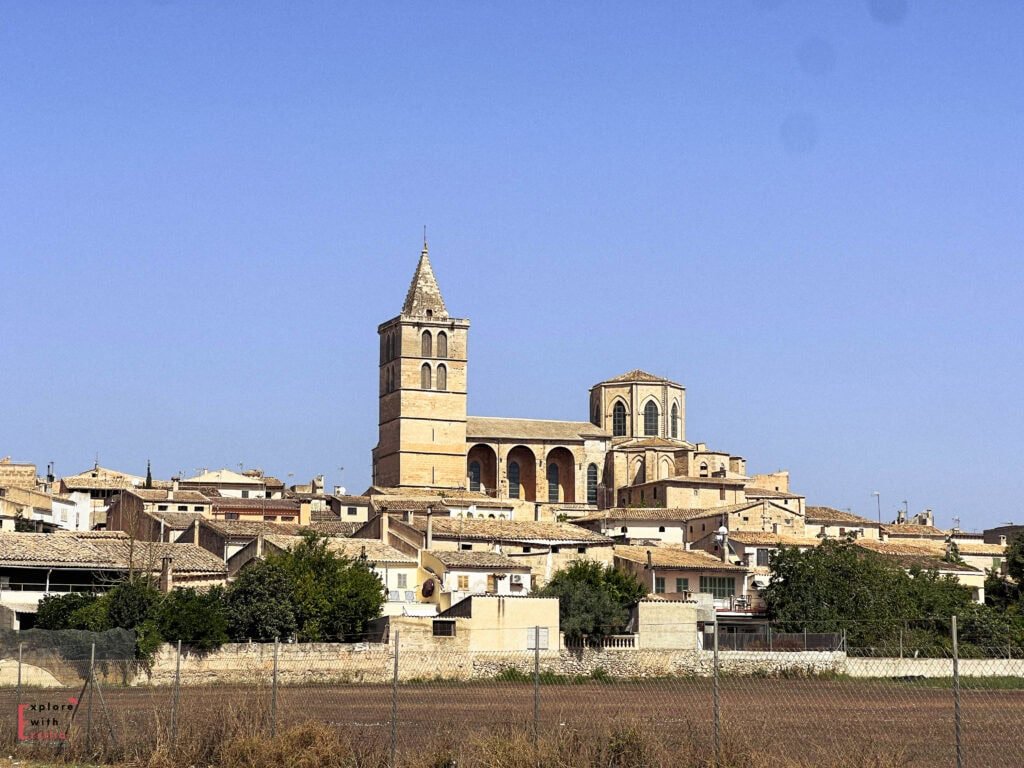
Today we checked out of our first agroturismo and began our journey to our second base in the southeast. Rather than driving directly there, we took advantage of the travel day to explore more inland villages.
Our first stop was Sineu, which absolutely astonished me. In August—peak tourist season!—this charming village was practically empty. We wandered the narrow streets, admired the impressive church, and enjoyed a leisurely coffee in the main square where the waiter seemed genuinely surprised to see visitors.
The café in the main square served me the best cortado I’ve had in Mallorca, and we watched elderly local men playing dominoes and discussing politics. It felt like we’d discovered a parallel universe compared to the busy coastal resorts.
Just a 15-minute drive from Sineu, we visited the fascinating Museu Etnològic dels Calderers, a living museum housed in a traditional Mallorcan estate. I wandered through rooms decorated exactly as they were when the family lived there—from the impressive kitchen with its massive hearth to the elegant dining room set for a feast.
The wine cellar still holds ancient barrels, and you can almost smell the decades of production in the air! What amazed me most was that during peak August tourism, we shared this incredible place with just one other family for our entire two-hour visit. Can you imagine having such a cultural treasure practically to yourself during high season?
In the late afternoon, we arrived at our second accommodation, Hotel Rural Sa Terrassa in Cas Concos—another charming rural property with a beautiful pool and garden. After checking in, we took a short drive to a nearby beach for a sunset swim, followed by dinner at our hotel’s restaurant, where they served traditional Mallorcan dishes made with ingredients from their own garden.
Day 7: Beach & Hike Day
We dedicated this day to exploring the natural beauty around our new base. After breakfast at our rural hotel, we drove to a small hidden beach recommended by our host. I promised not to share its name online (to keep it from getting overrun), but it was a tiny cove with crystal-clear water and maybe 15 other people—in August!
After a morning swim, we followed a coastal hiking trail that our host had marked on a map for us. The path wound along dramatic cliffs, through pine forests, and past old watchtowers with incredible views of the Mediterranean. The scent of wild herbs crushed underfoot and the sound of waves crashing below created a sensory experience I’ll never forget.
We brought a packed lunch and stopped at a spectacular viewpoint to enjoy it. Having the car allowed us to access a trailhead that would have been difficult to reach otherwise, giving us a hiking experience far from the tourist crowds.
In the late afternoon, we returned to our hotel to relax by the pool and enjoy the peaceful countryside setting. Dinner at Sa Terrassa‘s restaurant was another highlight—their homemade paella with locally caught seafood was absolutely delicious.
Day 8: Boat Day from Portocolom
Today was one of the absolute highlights of our trip! We rented a small motor boat (no license required) from Portocolom, a working fishing village with colorful boats and an authentic atmosphere.
Portocolom itself was a delightful surprise. While most tourists flock to developed resorts, this fishing village feels like stepping back in time. The harbor is lined with colorful boats that actually go out fishing daily (not just for show!). The lighthouse standing guard at the harbor entrance creates a picturesque backdrop.
After a brief safety instruction, we set off with our packed picnic, plenty of water, and sunscreen to explore the famous calas of eastern Mallorca. The rental cost €160 for 8 hours—a splurge, but divided between the two of us and considering the experience it provided, it was absolutely worth it.
We visited Cala Varques, Cala Sa Nau, and several smaller unnamed coves that are either inaccessible by land or require lengthy hikes in the scorching sun. The freedom to drift into a secluded bay, drop anchor, swim in perfect solitude, then move on when we felt like it was incredible.
When we occasionally passed by the “famous” beaches accessible by road, the contrast was shocking—they were absolutely packed with people while we had entire stretches of coastline to ourselves!
After returning the boat in the late afternoon, we drove to Cala d’Or for dinner at Los Amigos Tapas Bar. This resort town is definitely more touristy, but the restaurant was excellent, with a beautiful terrace and delicious seafood tapas.
Day 9: Cala Figuera & Pool Relaxation
After yesterday’s active adventures, we planned a more relaxed day. We started with a morning visit to Cala Figuera, a natural harbor with traditional fishermen’s houses built right to the water’s edge that feels like a little slice of Venice but with Mallorcan character.
I spent hours wandering the promenade, completely enchanted by how the scenery changes around every bend. Pro tip from someone who learned the hard way—avoid going around noon! There’s minimal shade, and the summer sun is brutal. We arrived around 9AM and it was perfect.
What struck me most about Cala Figuera was the authenticity—fishermen mending nets, boats that are actually used for fishing rather than just tourist trips, and restaurants serving the morning’s catch. Remember to keep turning around as you walk the harbor—some of the best views are behind you!
After our morning exploration, we returned to our rural hotel to spend the afternoon relaxing by the pool. After a week of active sightseeing, it felt wonderful to simply read a book under an olive tree, cool off in the pool, and enjoy the peaceful countryside setting.
Dinner was at our hotel again—their menu changes daily based on what’s fresh and available, and tonight’s slow-roasted lamb with local herbs was absolutely divine.
Day 10: Changing Bases & Sóller Tram Adventure
Today we checked out of our second accommodation and headed to our third and final base near Sóller in the northwest. Rather than driving directly there, we made a special stop at Alfàbia Gardens near Bunyola.
This beautiful estate set at the foot of the Tramuntana mountains combines a historic country house with spectacular gardens. The moment I walked through the entrance with its distinctive “bull’s eye” windows, I knew this place was special.
Inside, the stone staircase, open cistern, and pergola with playful water features created perfect photography opportunities. I was mesmerized by the ancient trees with their fascinating root systems exposed like natural sculptures. The peaceful cloister and central courtyard offered welcome shade during the afternoon heat.
By early afternoon, we arrived at our final accommodation, Finca Ca n’Ai near Sóller, and were immediately blown away. Set among orange and olive groves with the dramatic Tramuntana mountains as a backdrop, this renovated farmhouse was absolutely stunning. Our room had a private terrace overlooking the valley, and the infinity pool seemed to merge with the mountain landscape.
After settling in, we took the vintage wooden Tram from Sóller to Port de Sóller. This charming journey through orange groves and past stone houses offered equally beautiful scenery as the famous train from Palma, but with a fraction of the tourists. The wooden carriages with their open windows let the Mediterranean breeze wash over us as the tram rattled along tracks laid over a century ago.
When we arrived at Port de Sóller, we were greeted by a perfect horseshoe bay with gentle waters and a lovely promenade lined with palm trees. The mountains rise dramatically behind the port, creating this intimate enclosed feeling that’s both protective and awe-inspiring.
We had dinner at Neni Port Sóller, specifically chosen for its terrace with panoramic views over the bay. Watching the sunset paint the mountains pink while enjoying Mediterranean cuisine was the perfect welcome to the final leg of our journey.
Day 11: Valldemossa, Deià & Sóller Town
For our last full day, we woke before sunrise to visit Valldemossa before the tour buses arrived. This strategy paid off brilliantly—we found parking easily at 7AM and had the charming streets practically to ourselves for almost an hour.
Valldemossa is one of Mallorca’s most famous villages, with honey-colored stone buildings adorned with green shutters and flower-filled balconies. We visited the Royal Carthusian Monastery where Chopin and George Sand spent a famous winter, wandered the cobbled streets, and found a small bakery just opening for the day where we enjoyed ensaïmadas still warm from the oven.
By 9AM, the tour buses were arriving, so we continued to Son Marroig, a historic estate that offers some of the most spectacular views I’ve ever seen. Perched dramatically on a clifftop, it provides panoramic vistas of the Mediterranean that literally took my breath away. The stone lookout point jutting over the cliff edge made my heart race—in the best possible way!
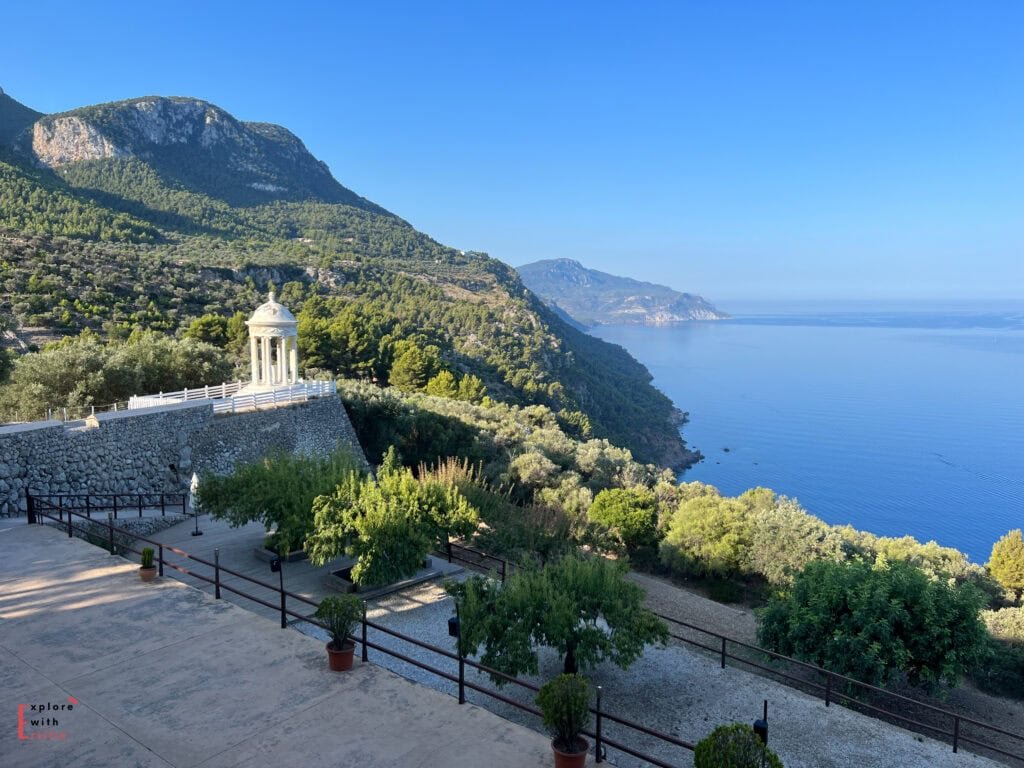
Next, we visited the picturesque village of Deià, a place that has attracted artists and writers for decades due to its special light and dramatic setting. The village clings to the hillside with the mountains soaring behind it and the sea glittering below. We explored its narrow streets, artistic boutiques, and the path down to Cala Deià, a small rocky beach with incredibly clear water.
During the hottest part of the day, we returned to our finca to enjoy that incredible infinity pool with views of the mountains. There’s something special about floating in cool water while gazing at sun-baked peaks.
In the late afternoon, we explored Sóller Town itself. The lively Plaza Constitución with its magnificent church is the heart of the town, surrounded by cafés and ice cream shops. We shopped for local olive oil and citrus products (the area is famous for its oranges and lemons) to take home as souvenirs.
For our final dinner, we followed our host’s recommendation to Cas Carreter, a traditional restaurant housed in an old carriage maker’s workshop. The simple but delicious food—including tumbet (Mallorcan ratatouille) and lamb slow-cooked with rosemary—was the perfect farewell meal. During our dinner, a group of locals was celebrating a birthday at a nearby table, confirming we’d found an authentic place rather than a tourist trap.
Day 12: Farewell to Mallorca
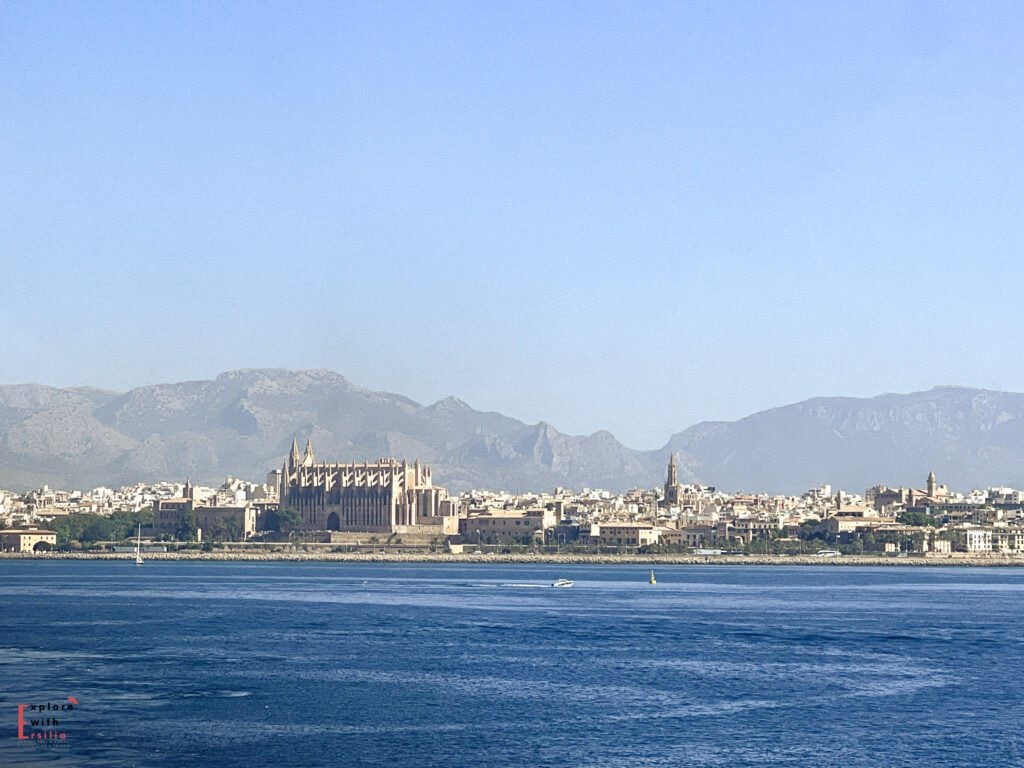
Our final morning arrived too quickly! After a leisurely breakfast on the terrace of our finca, with views of the sun illuminating the Tramuntana mountains, we reluctantly packed up and began our journey back to Palma de Mallorca to catch our ferry.
We allowed extra time to make one last stop at Mirador de Ses Barques, a stunning viewpoint overlooking the Sóller valley. Standing there, looking at the patchwork of orange groves stretching toward the sea, with mountains framing the scene, I felt immense gratitude for this journey.
Our ferry departed in the afternoon, taking us back to Barcelona with memories of an island that had completely surprised me. What I expected to be a crowded beach holiday turned into a rich cultural experience filled with authentic villages, dramatic landscapes, and genuine connections.
The key to our successful August trip was simple: staying in rural accommodations away from the coastal crowds, starting our days early, and being willing to explore beyond the famous spots. By following this approach, we experienced a Mallorca that many summer visitors never discover—one of peaceful villages, uncrowded viewpoints, and authentic local life.
As the ferry pulled away from the port and Mallorca’s mountains receded into the distance, I was already planning a return trip. Next time, perhaps in spring when the almond trees bloom—but I wouldn’t rule out another August adventure, now that I know the secrets to enjoying this beautiful island even during peak season!

author page / EDITORIAL POLICY PAGE
Hi, I’m Ersilia

Toulouse, France

Originally from Romania

English & French Content
As a Romanian expat living in the heart of southern France, I guide English speakers to discover authentic French experiences without the language barrier. My unique perspective as both a local and an expat allows me to share insider tips, cultural insights, and practical advice that you won’t find in typical guidebooks.
My Expertise:
- French life and culture navigation
- Hidden gems across French regions
- Eastern vs Western European perspectives
- Local insights and practical travel tips
Blog Socials
Personal Pages

